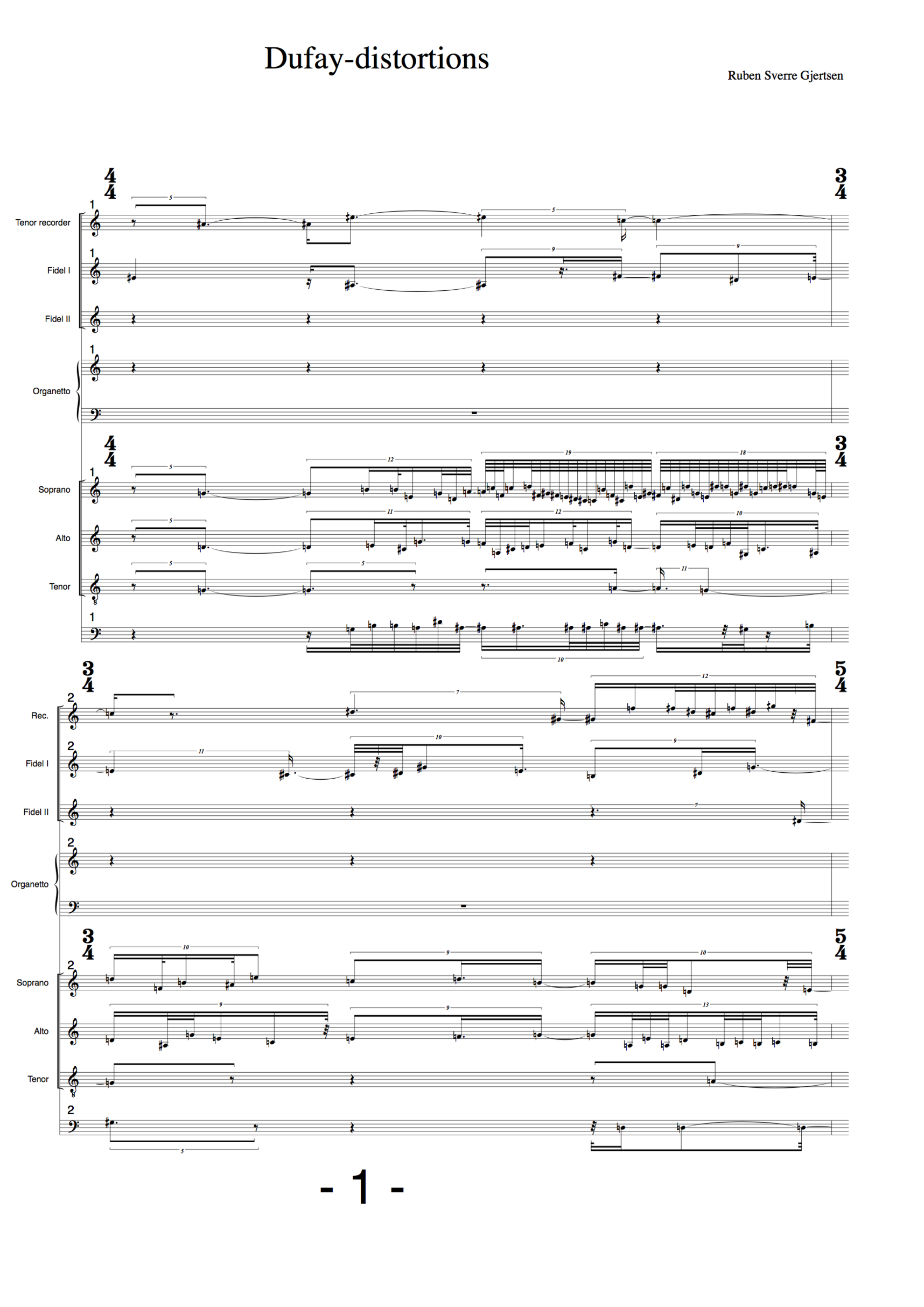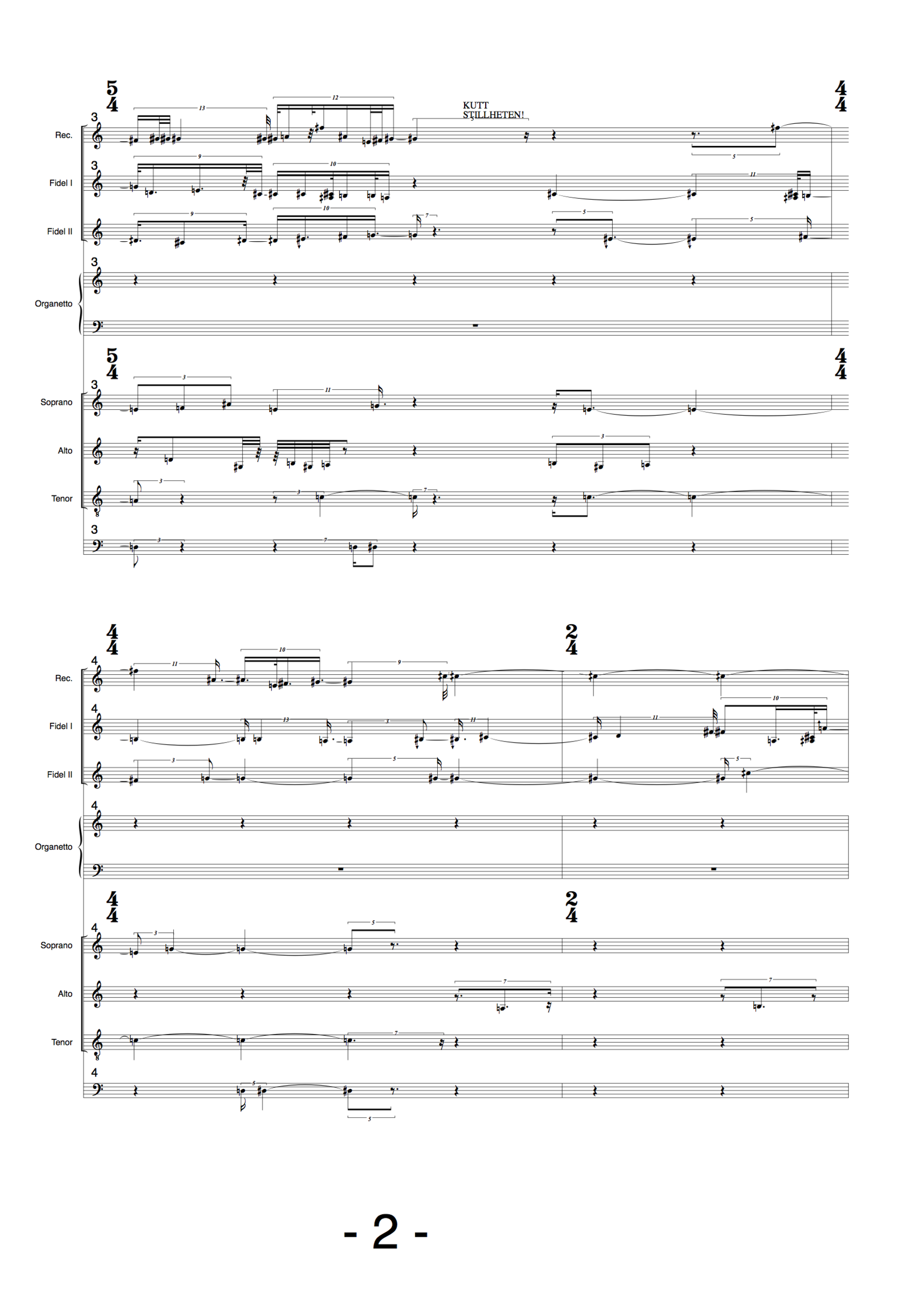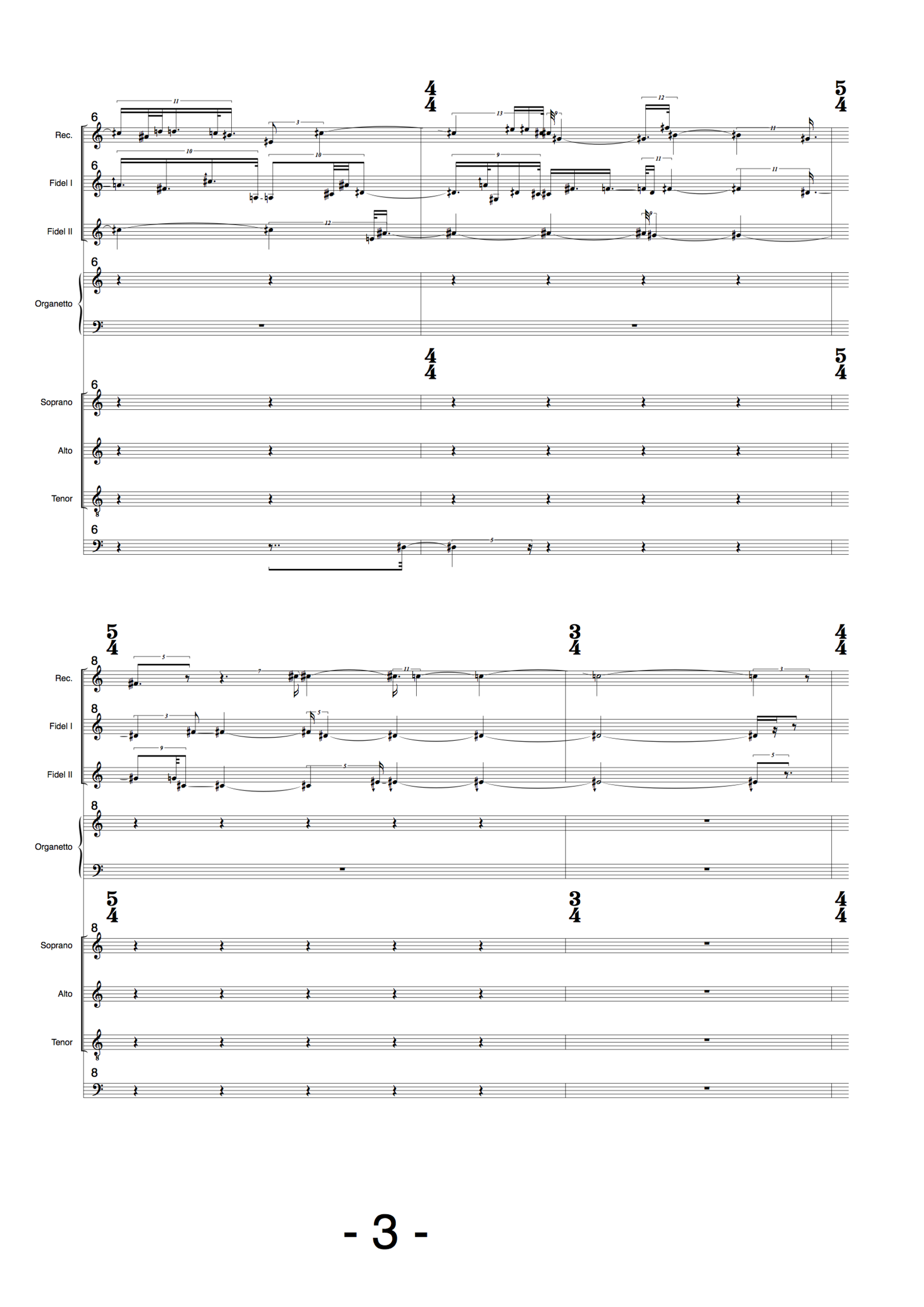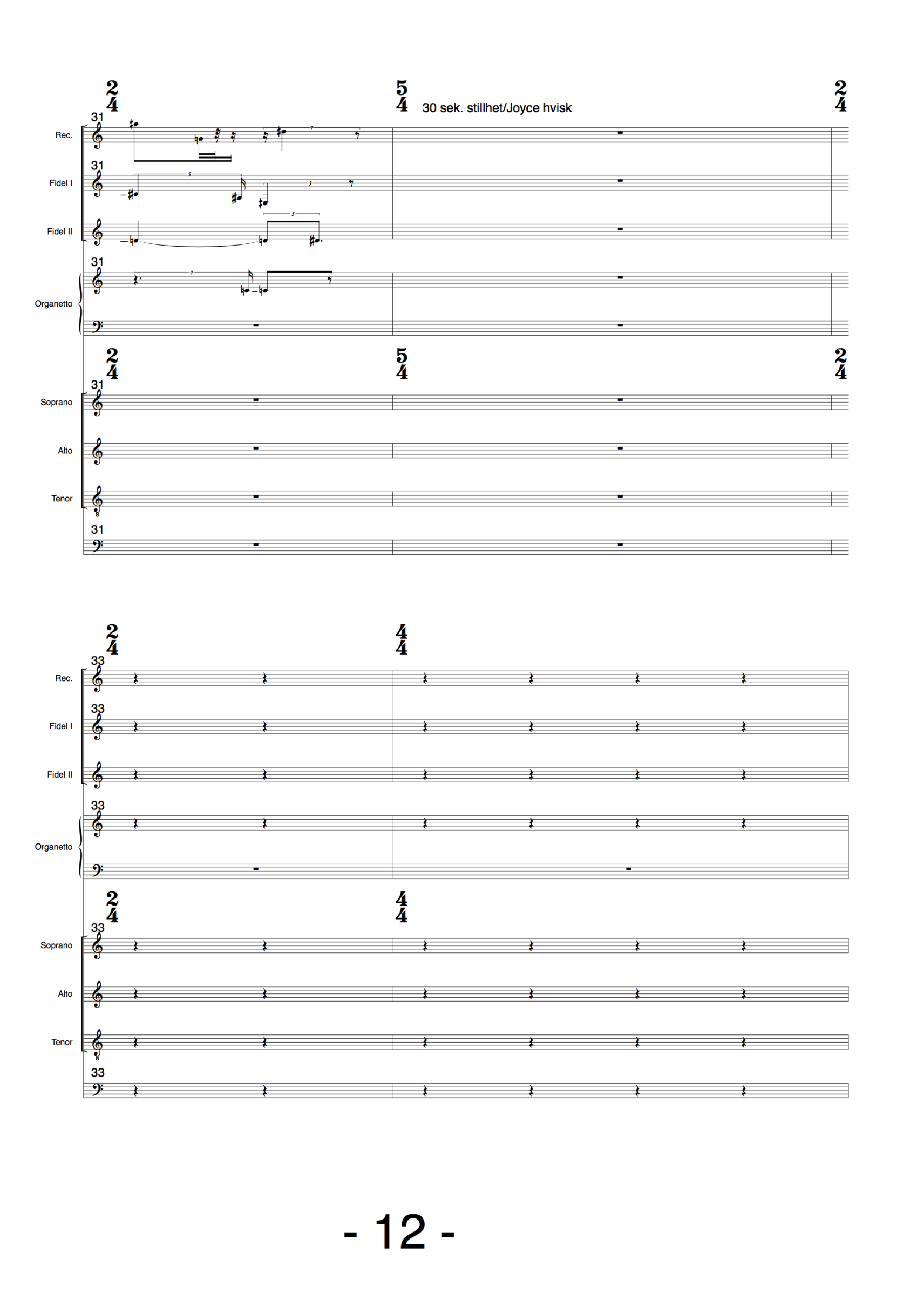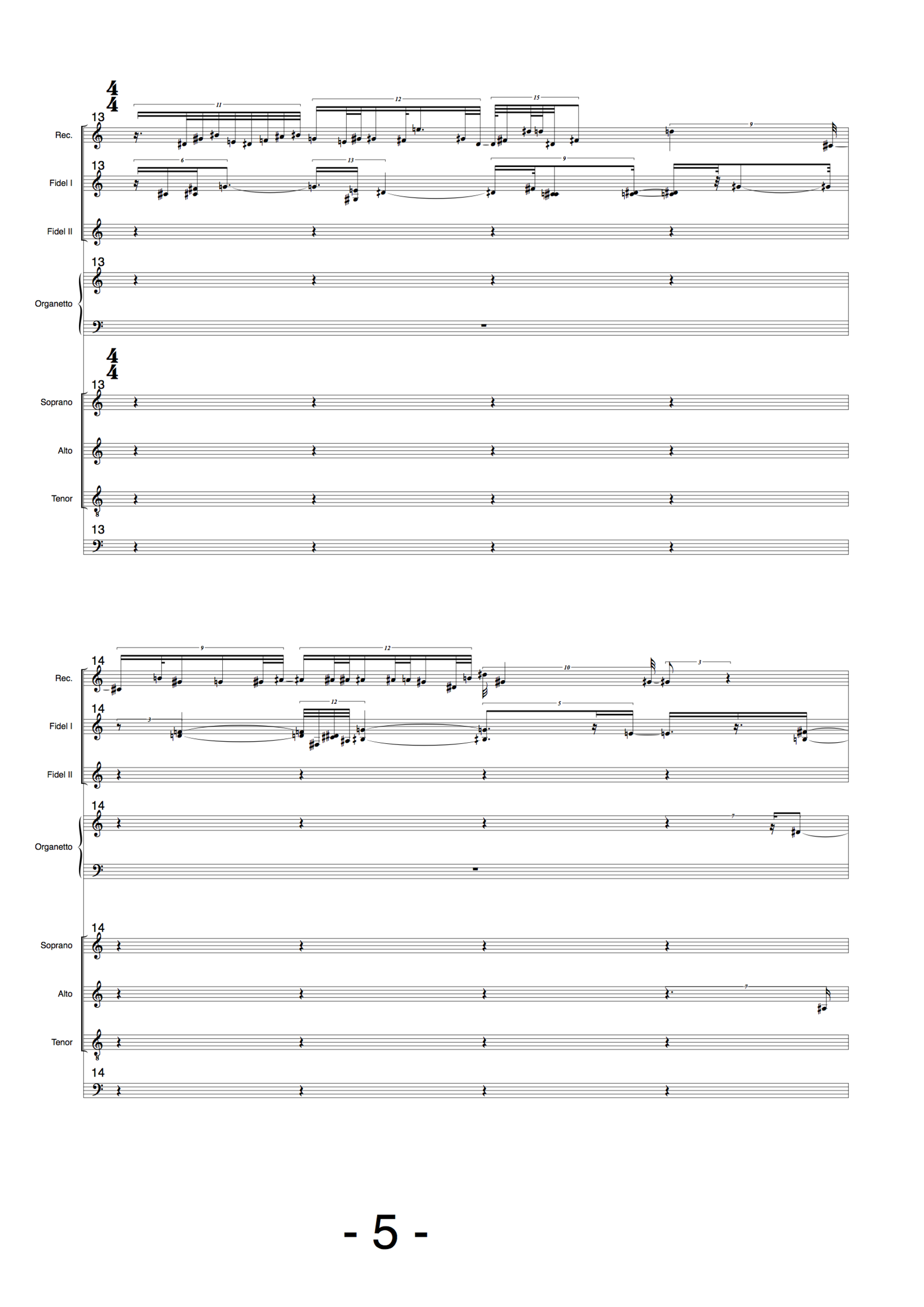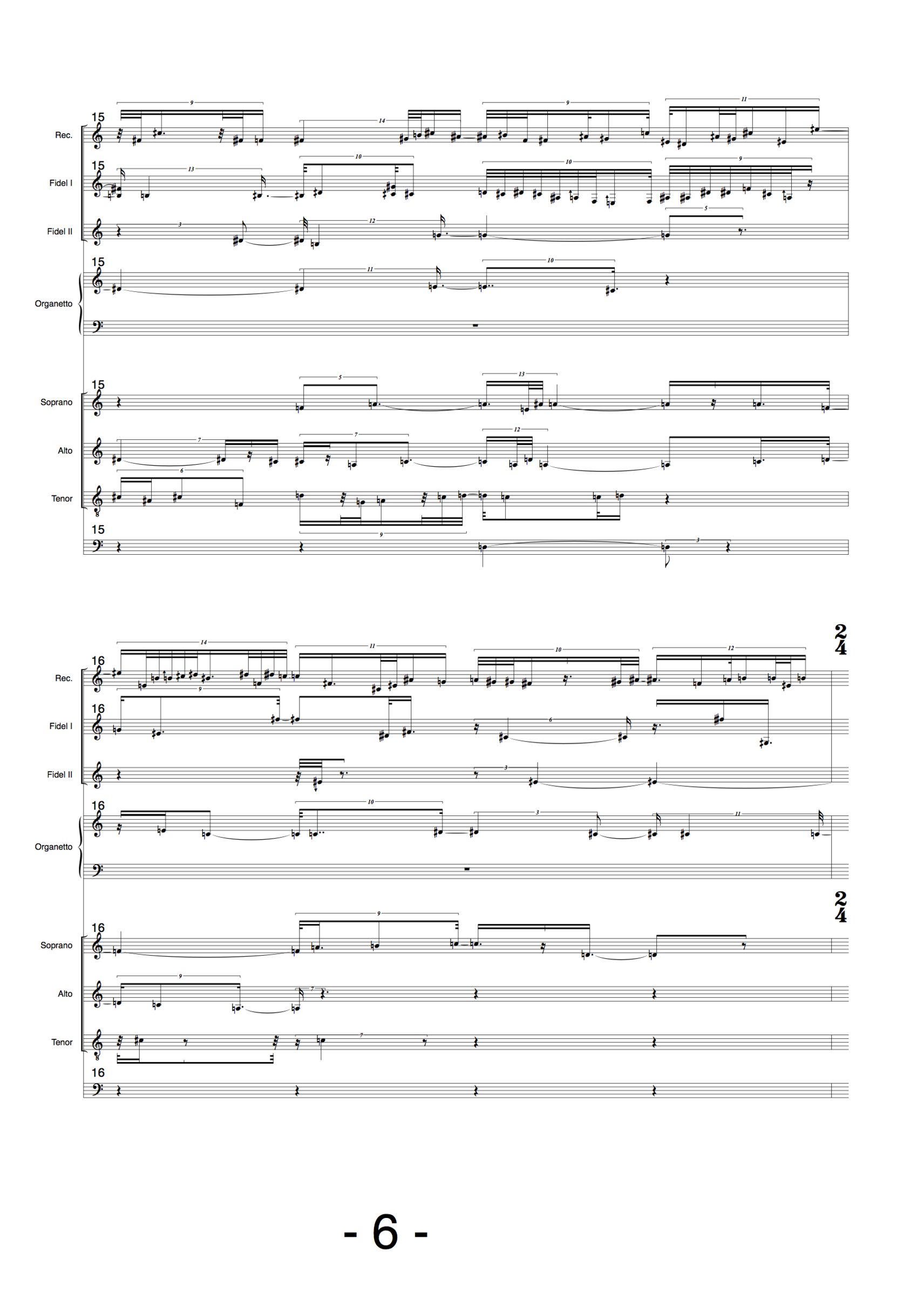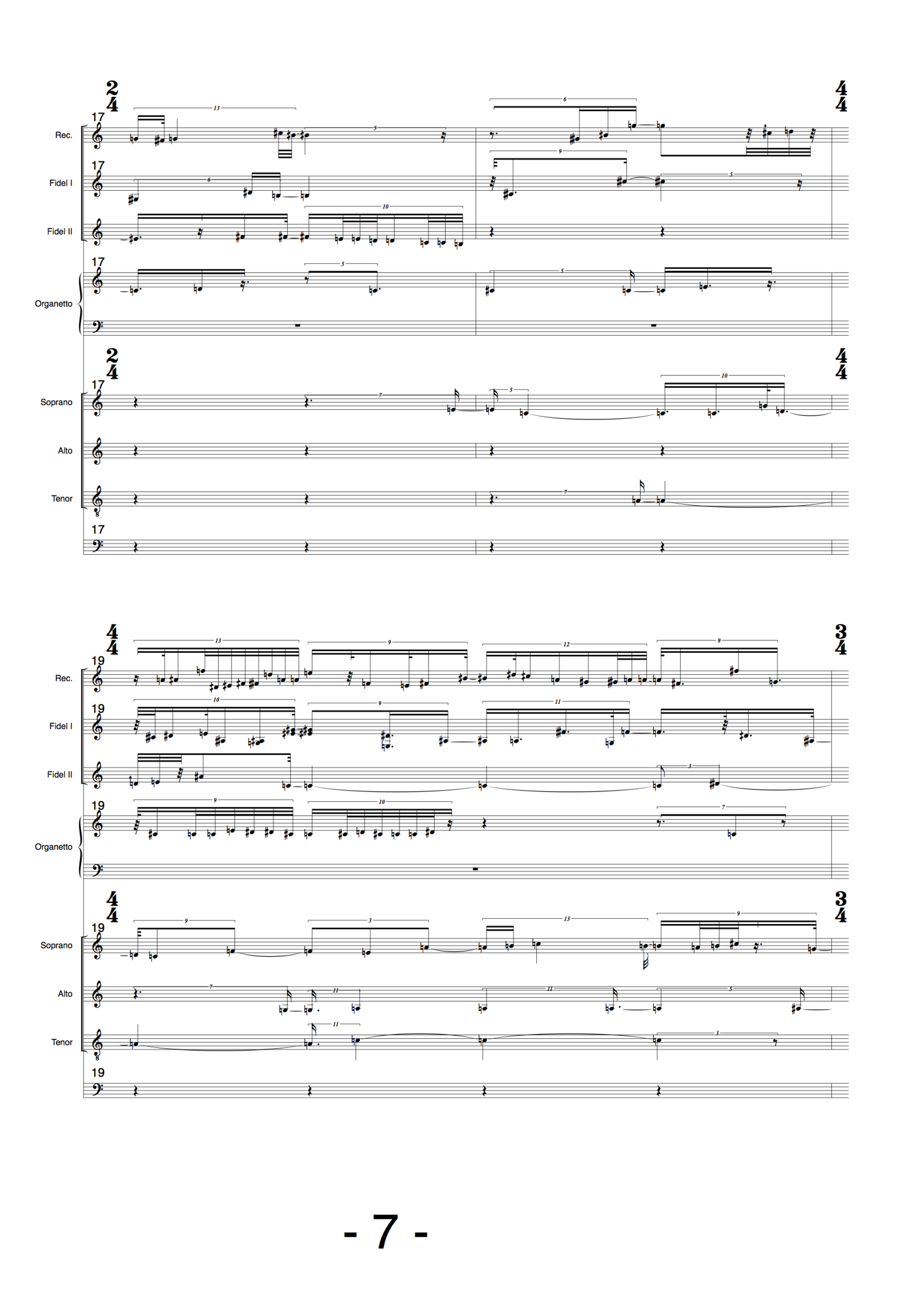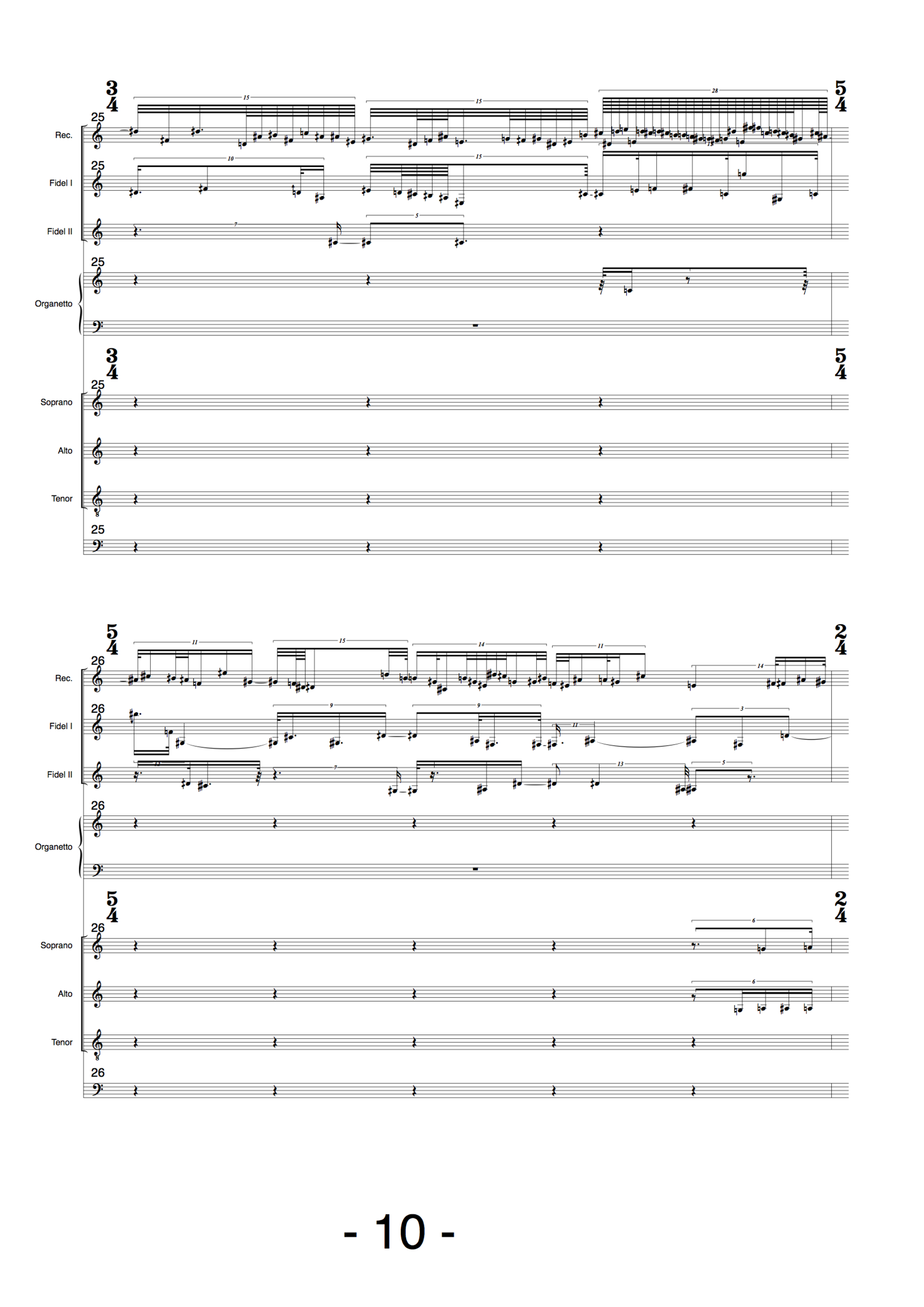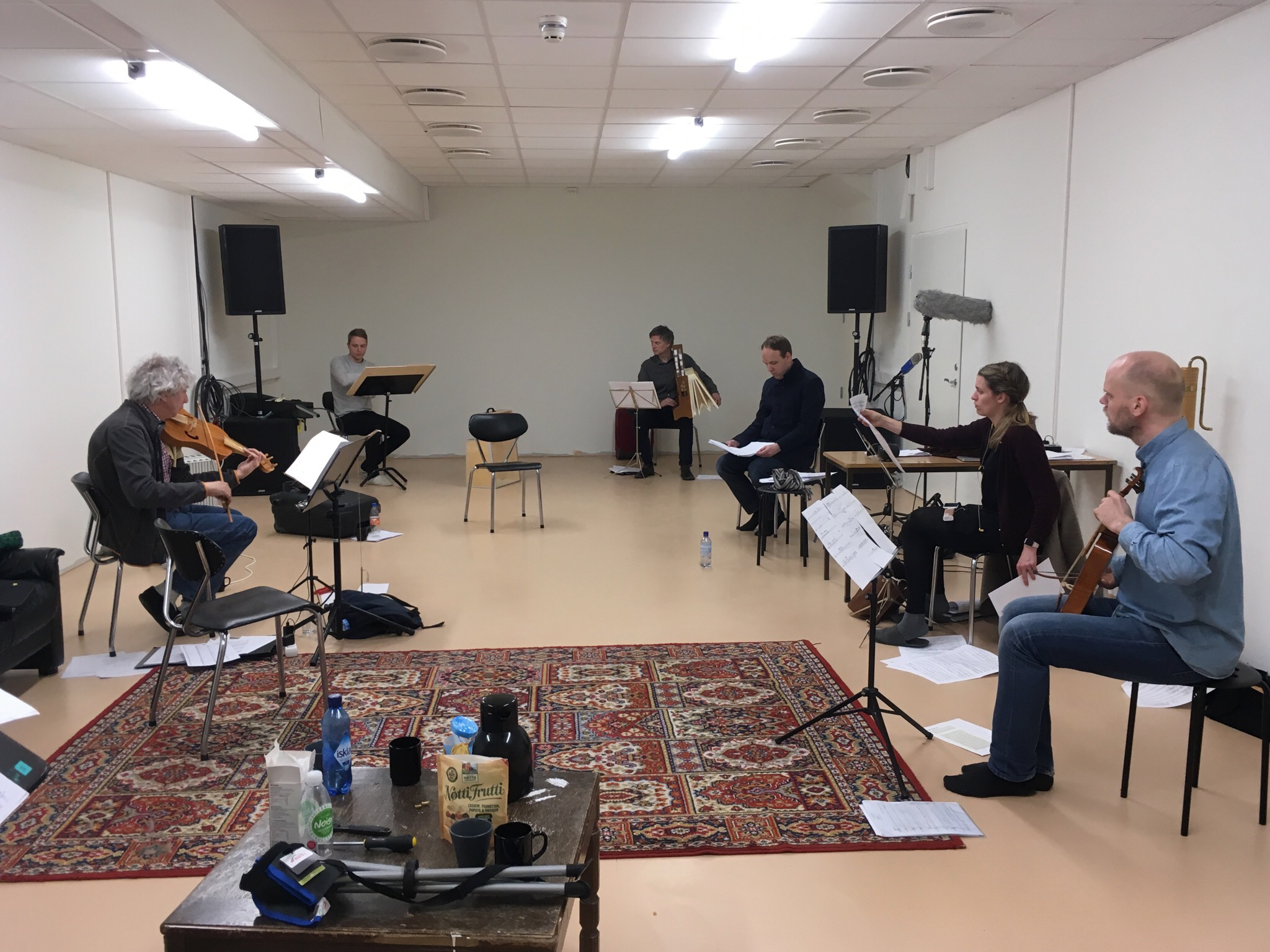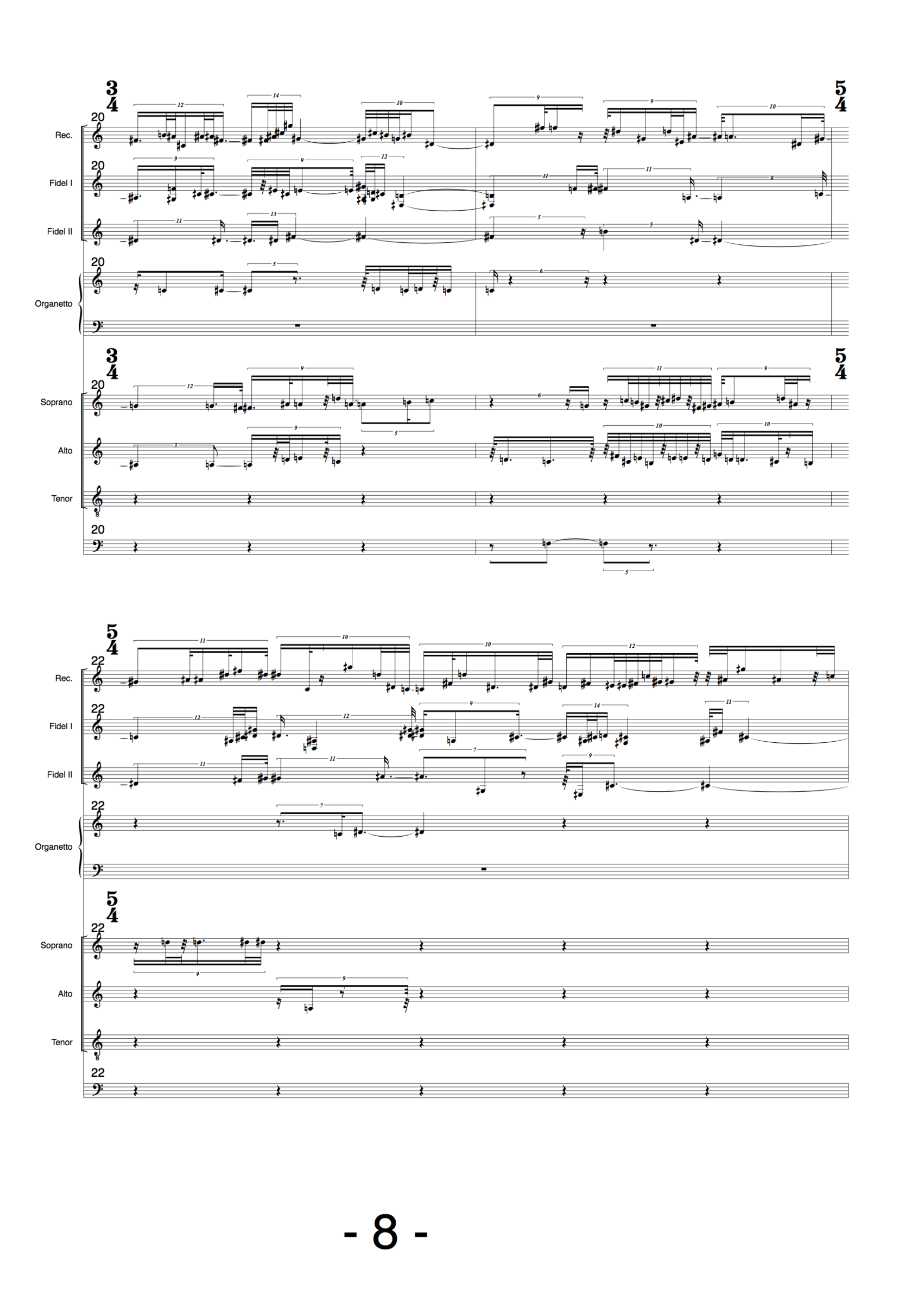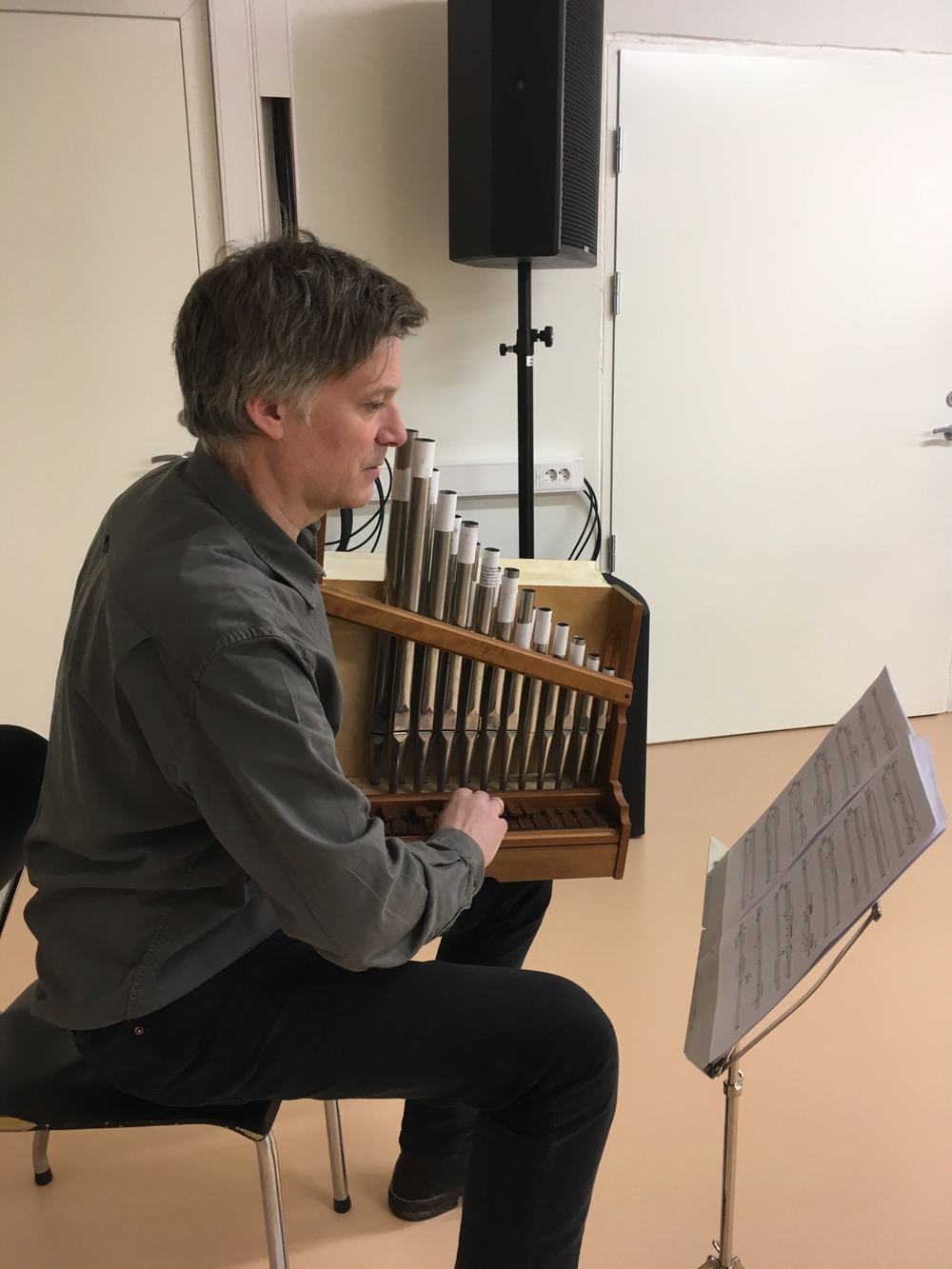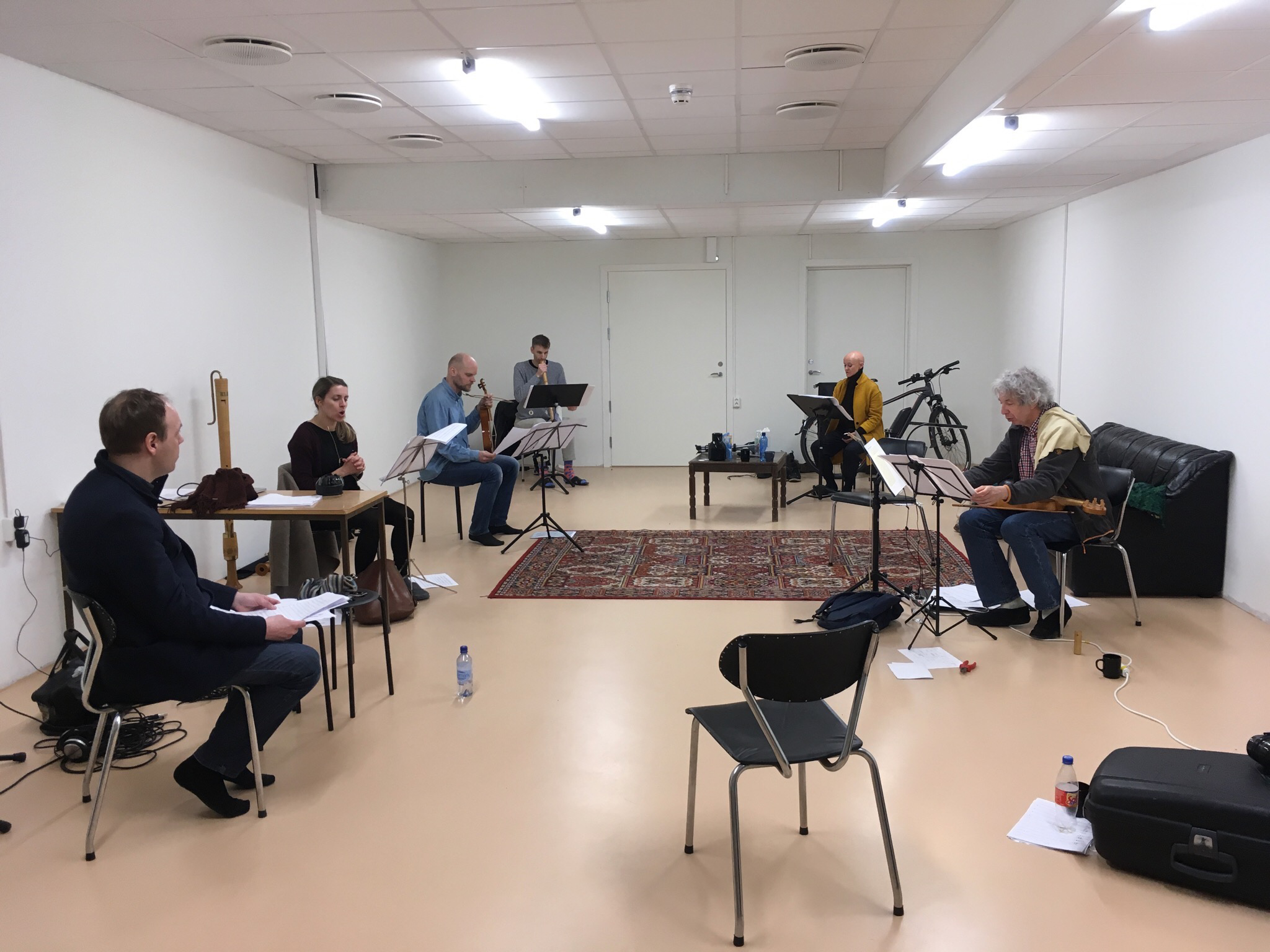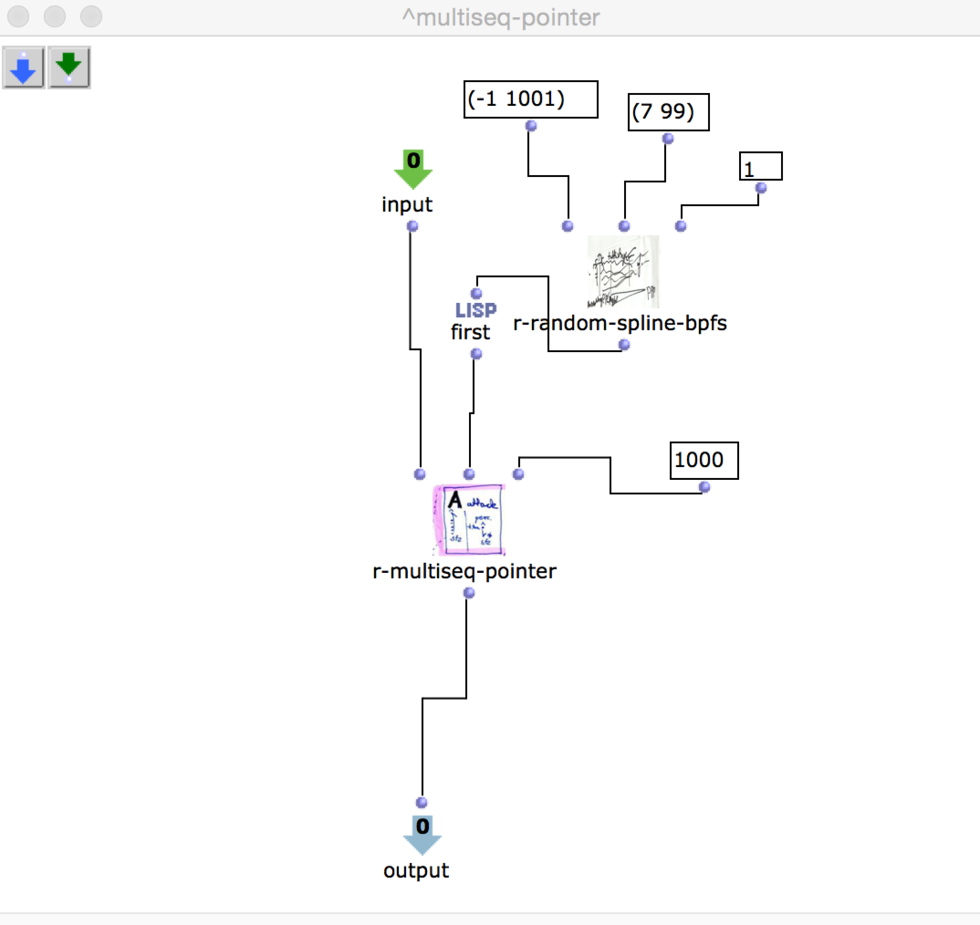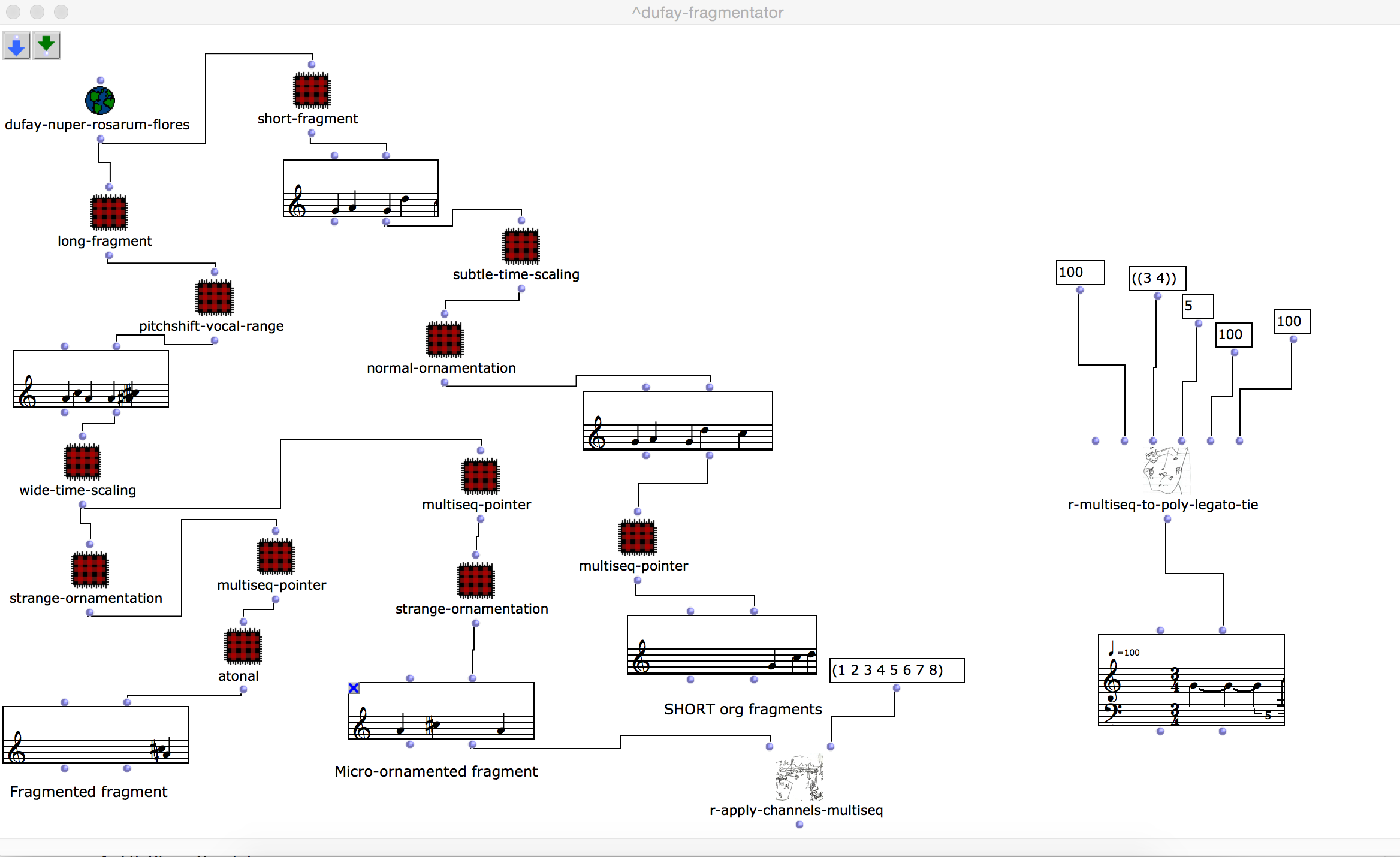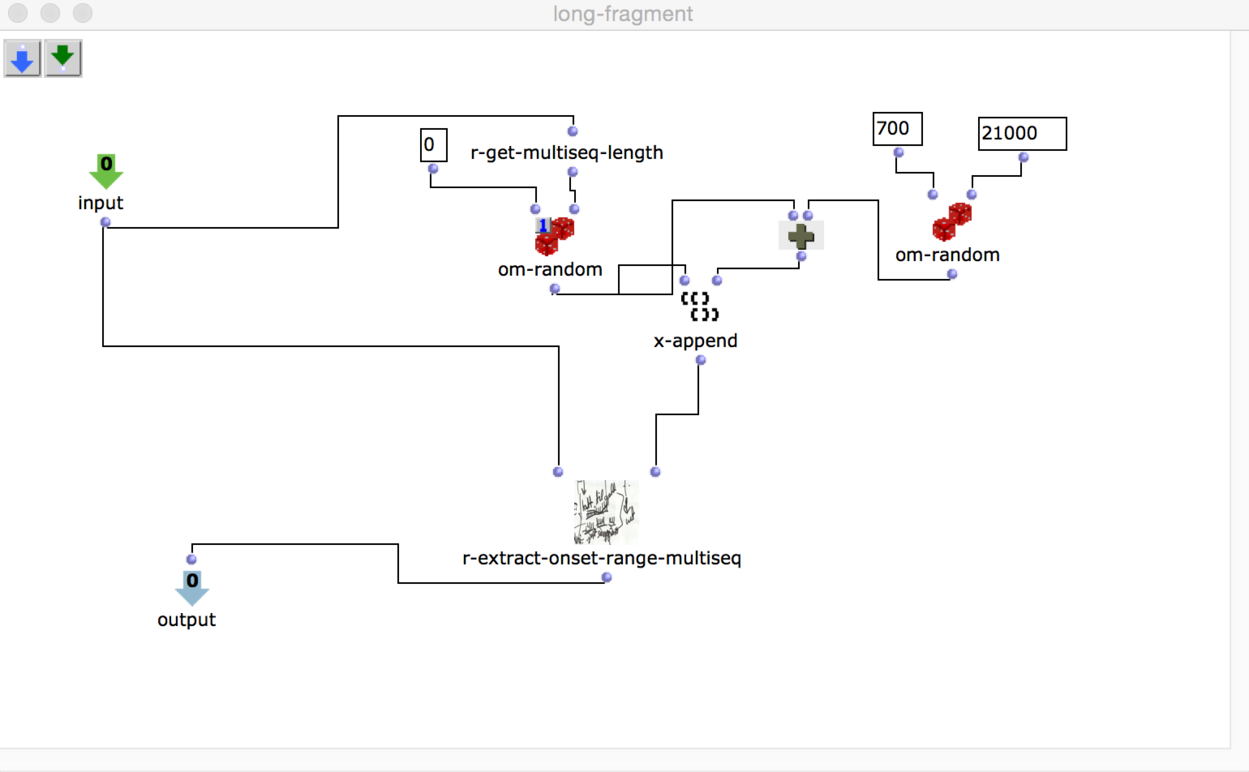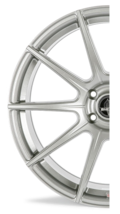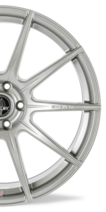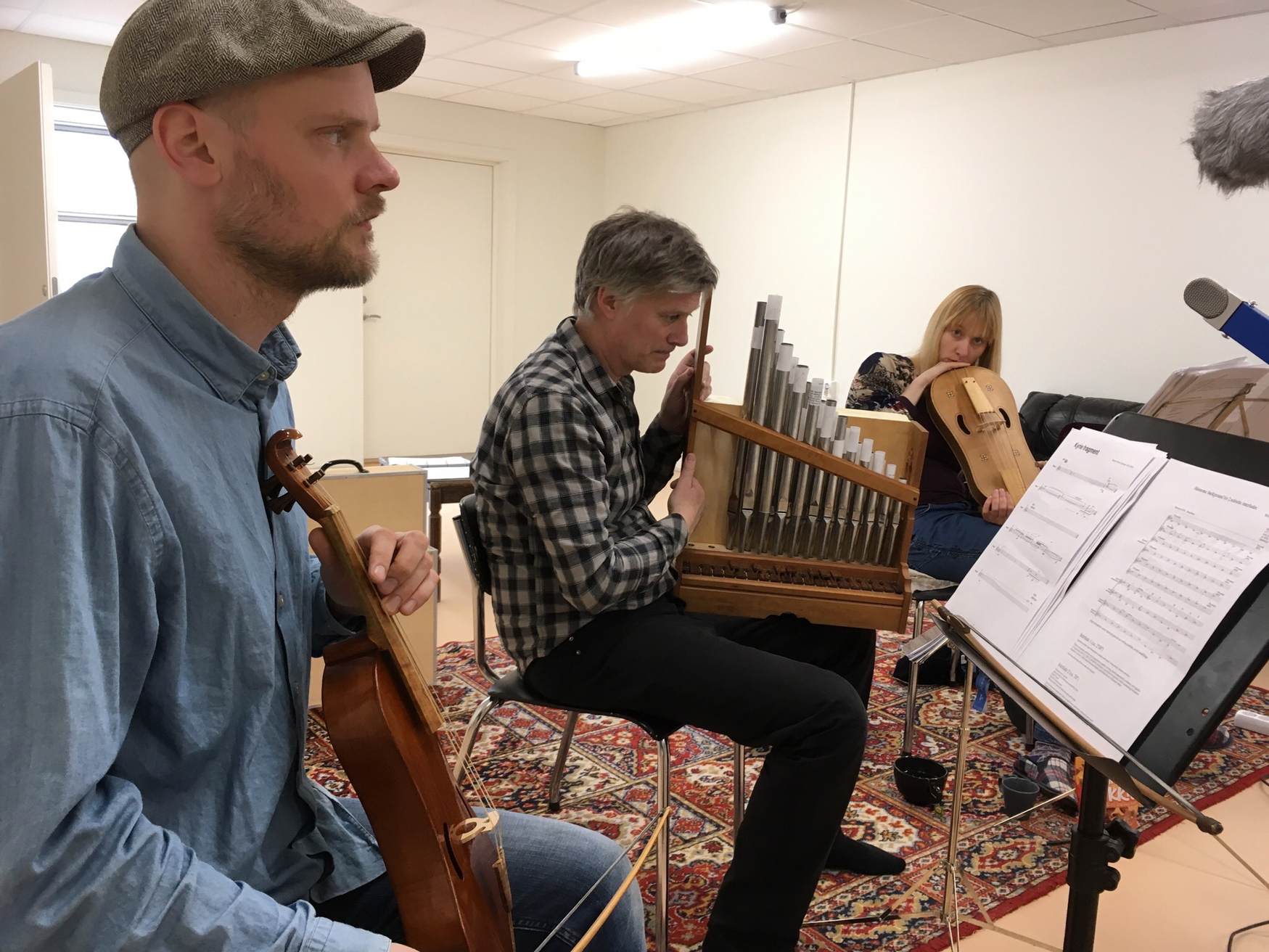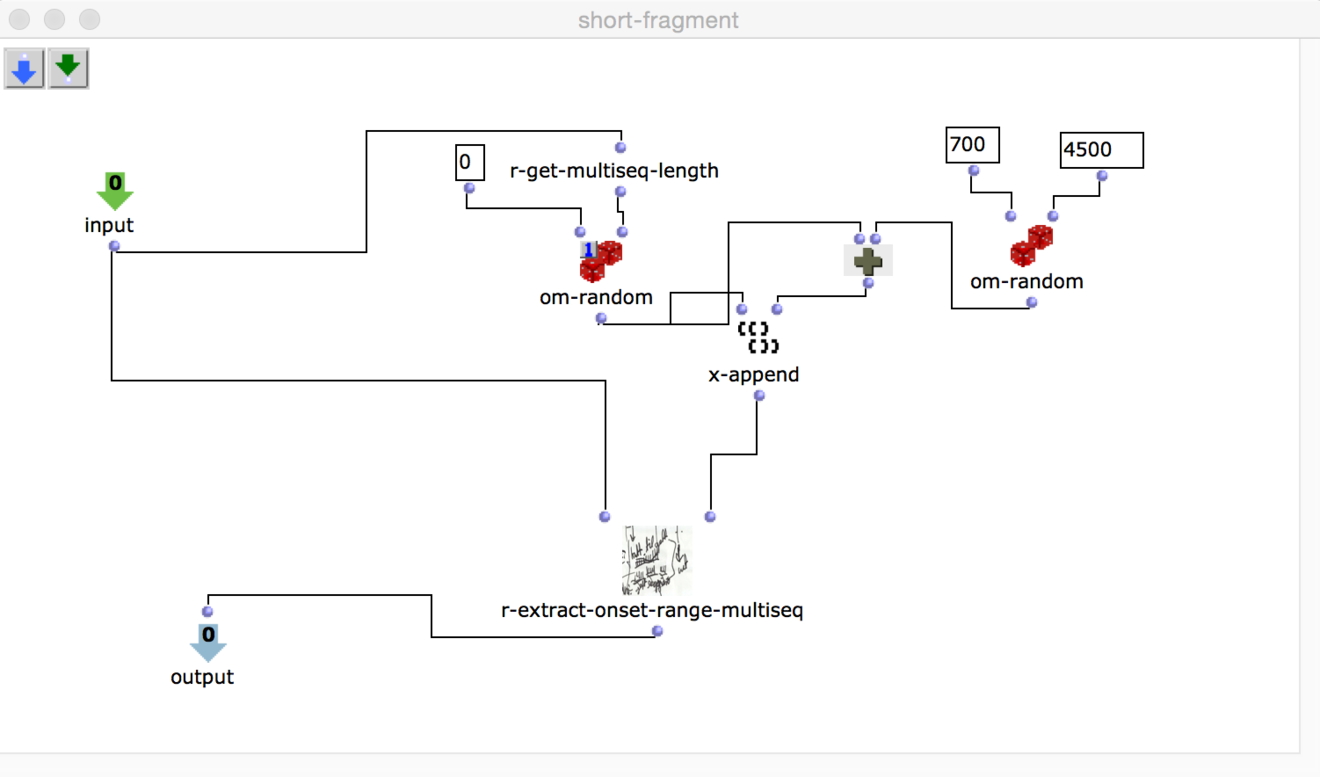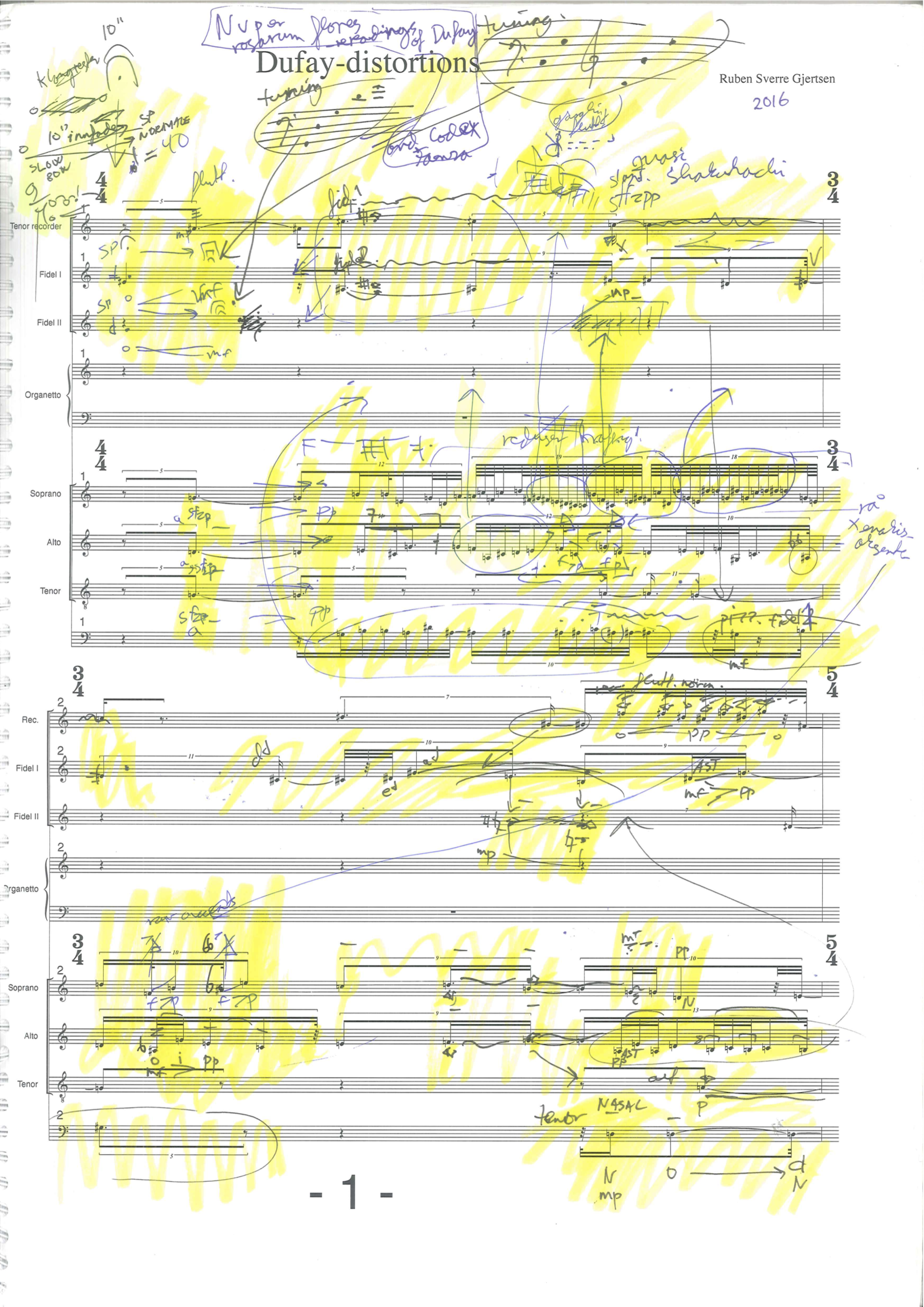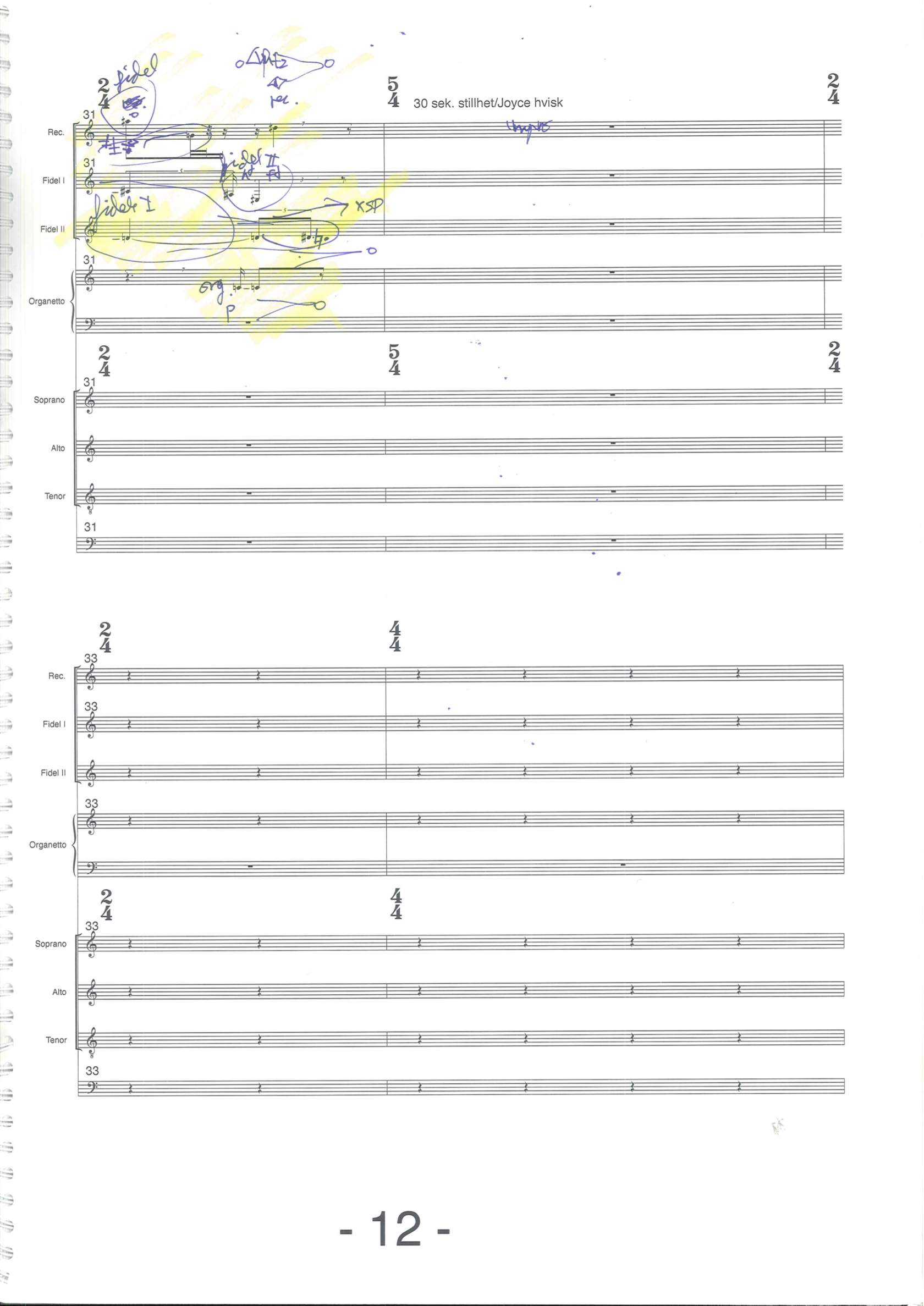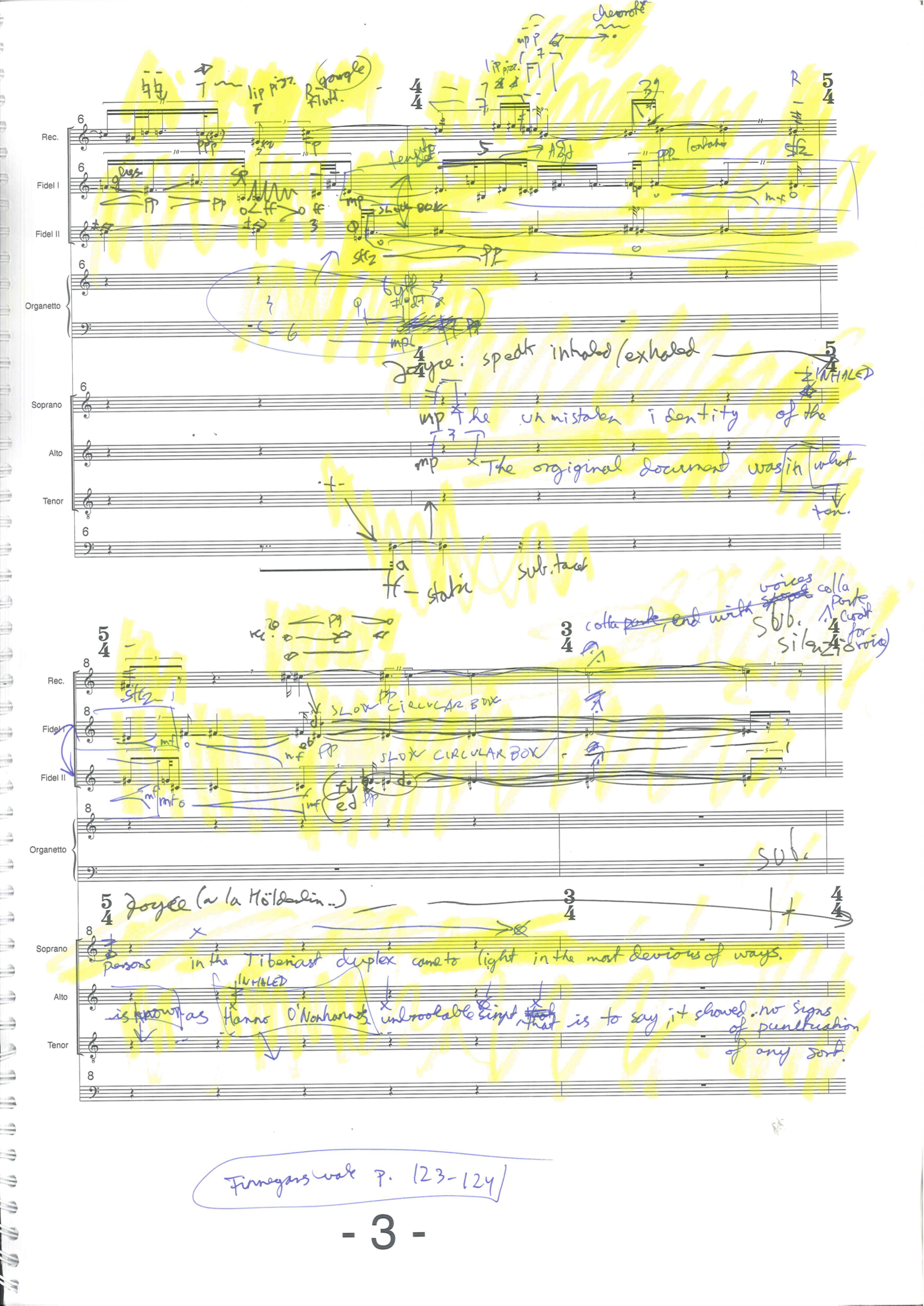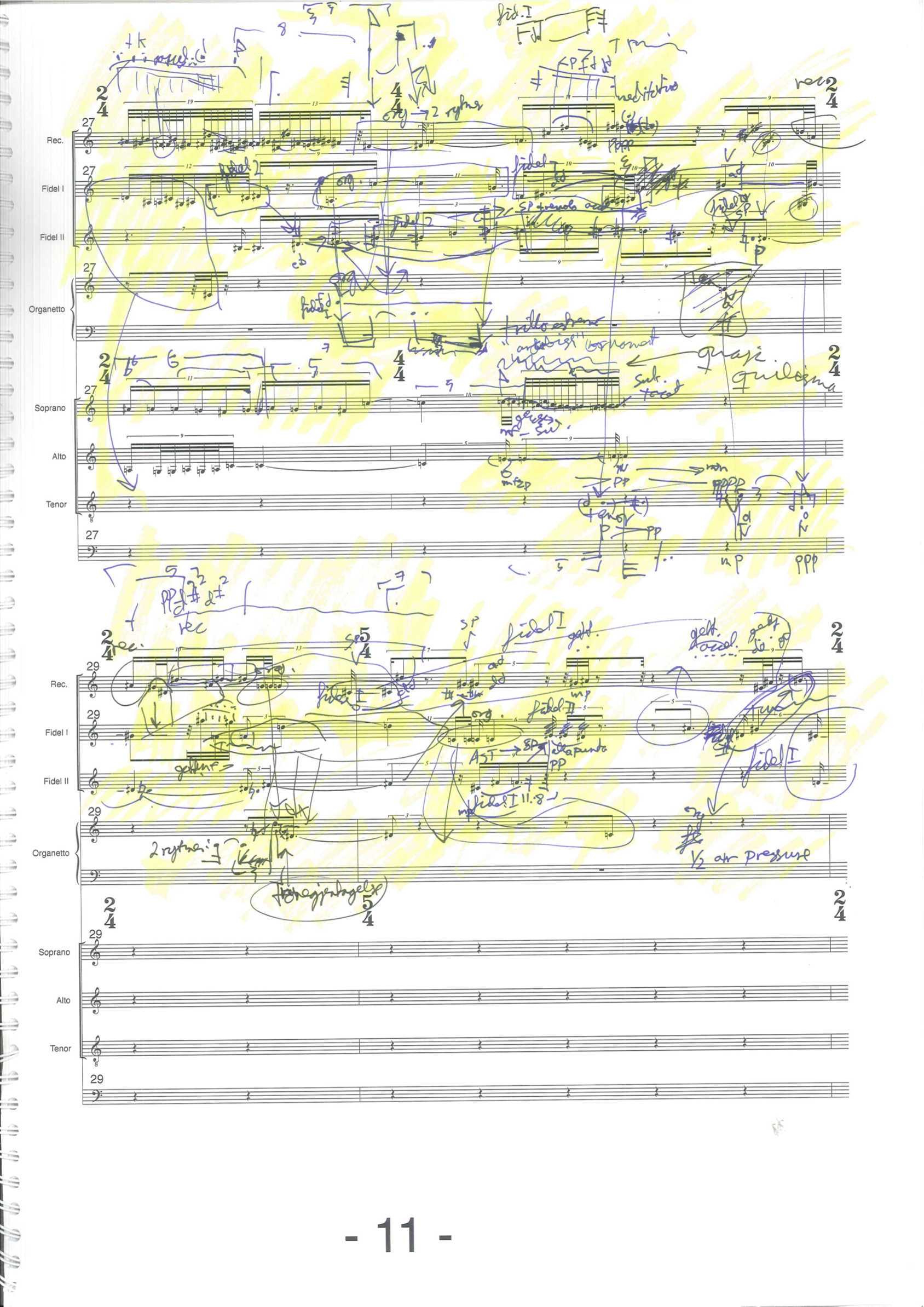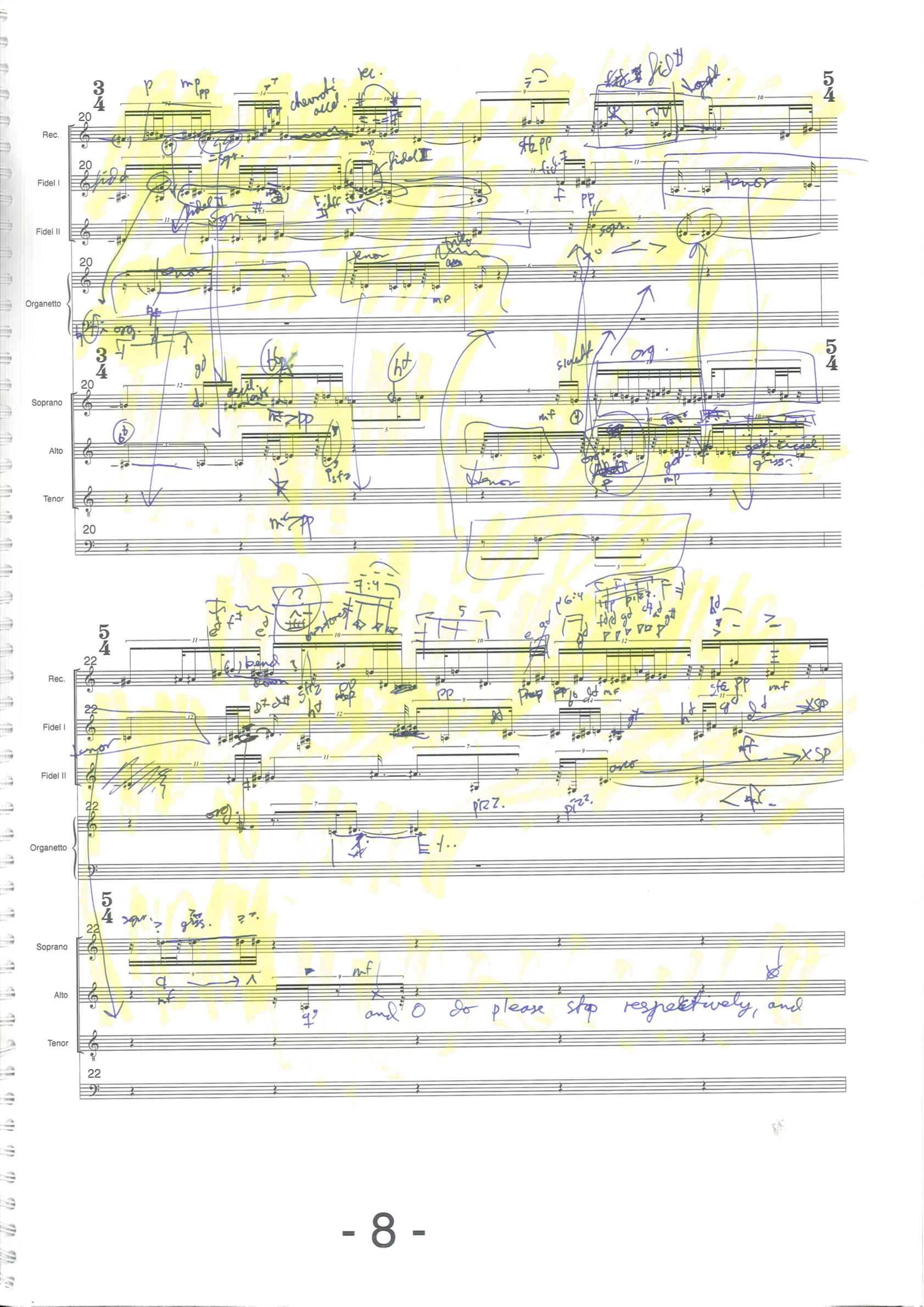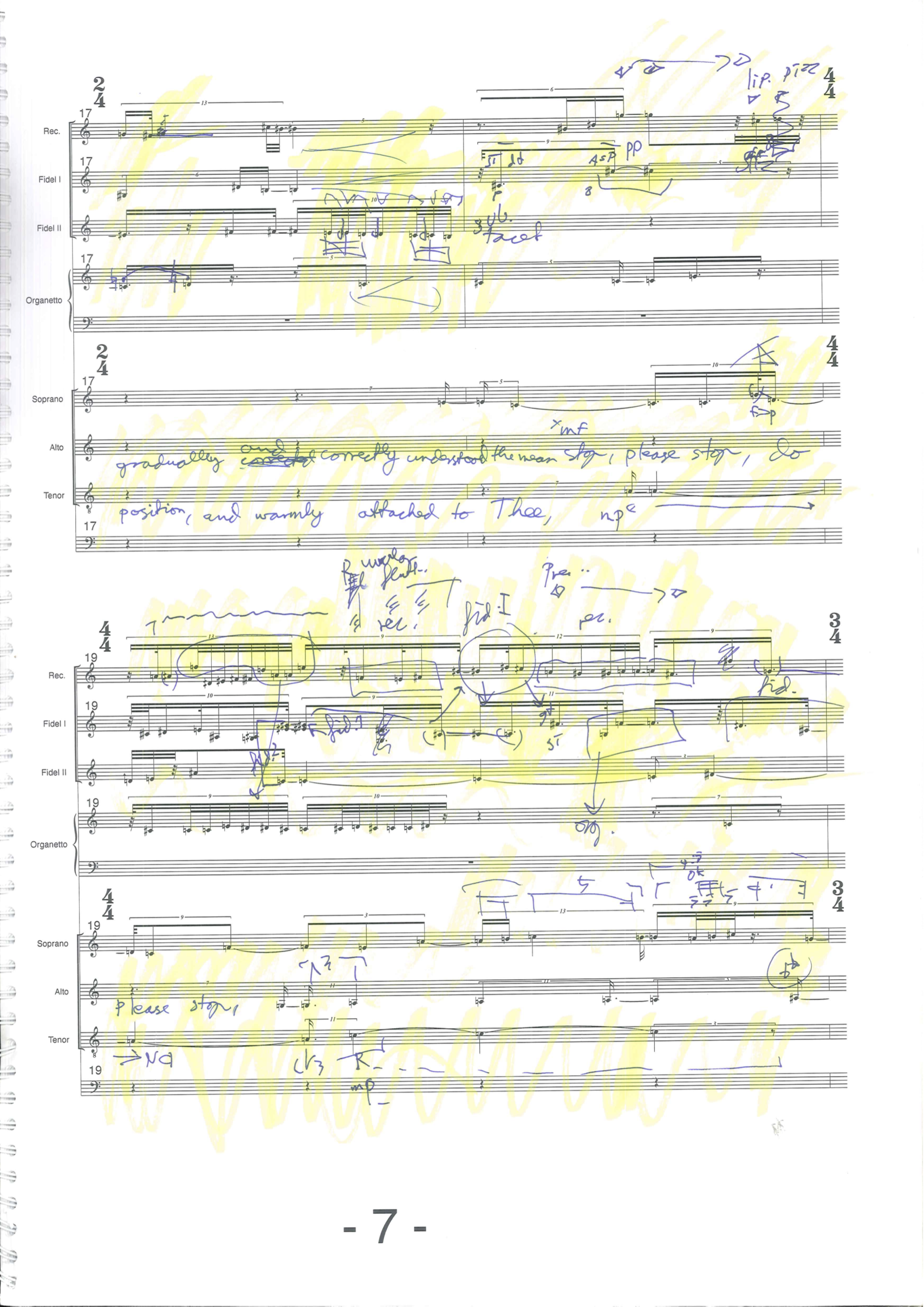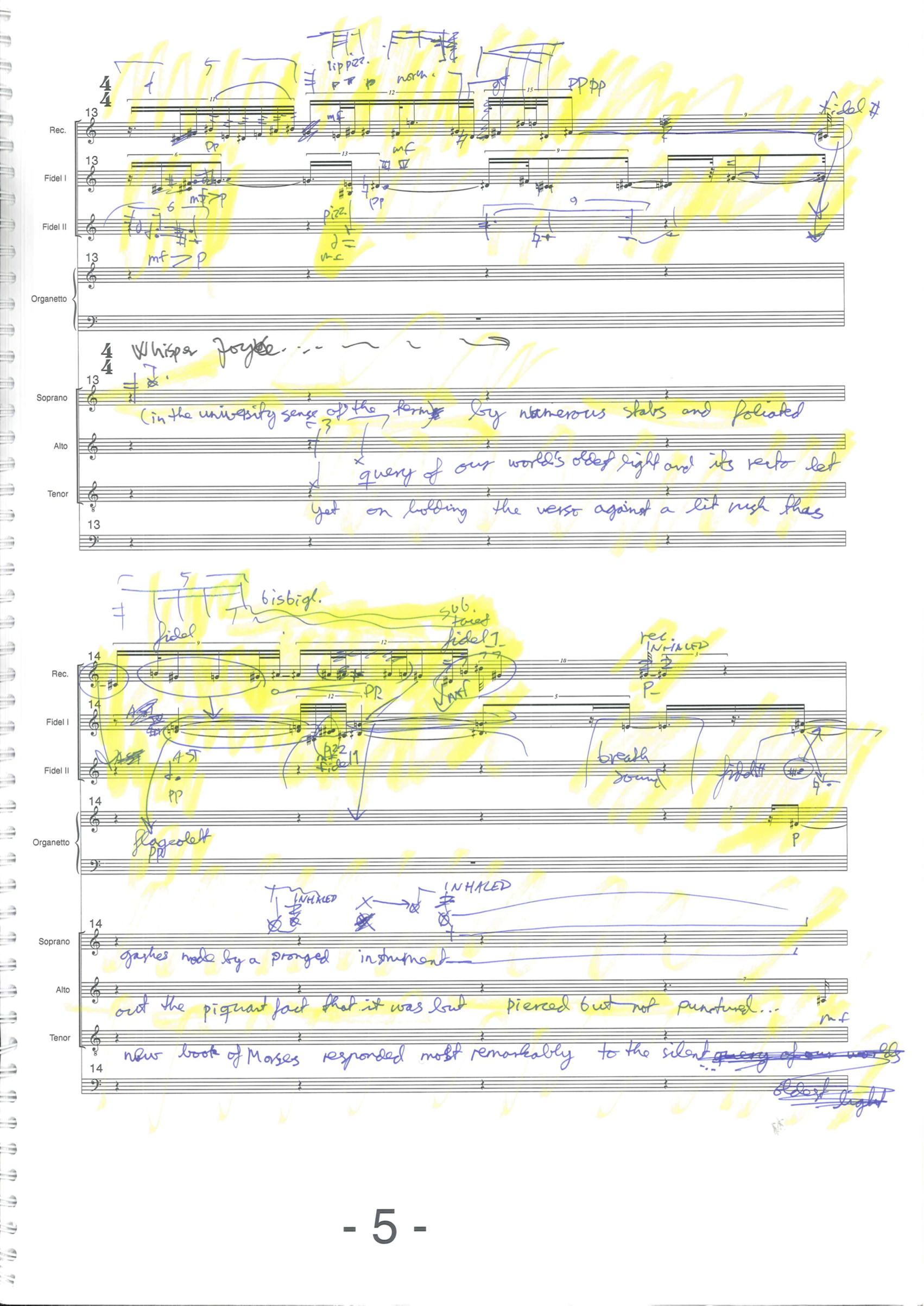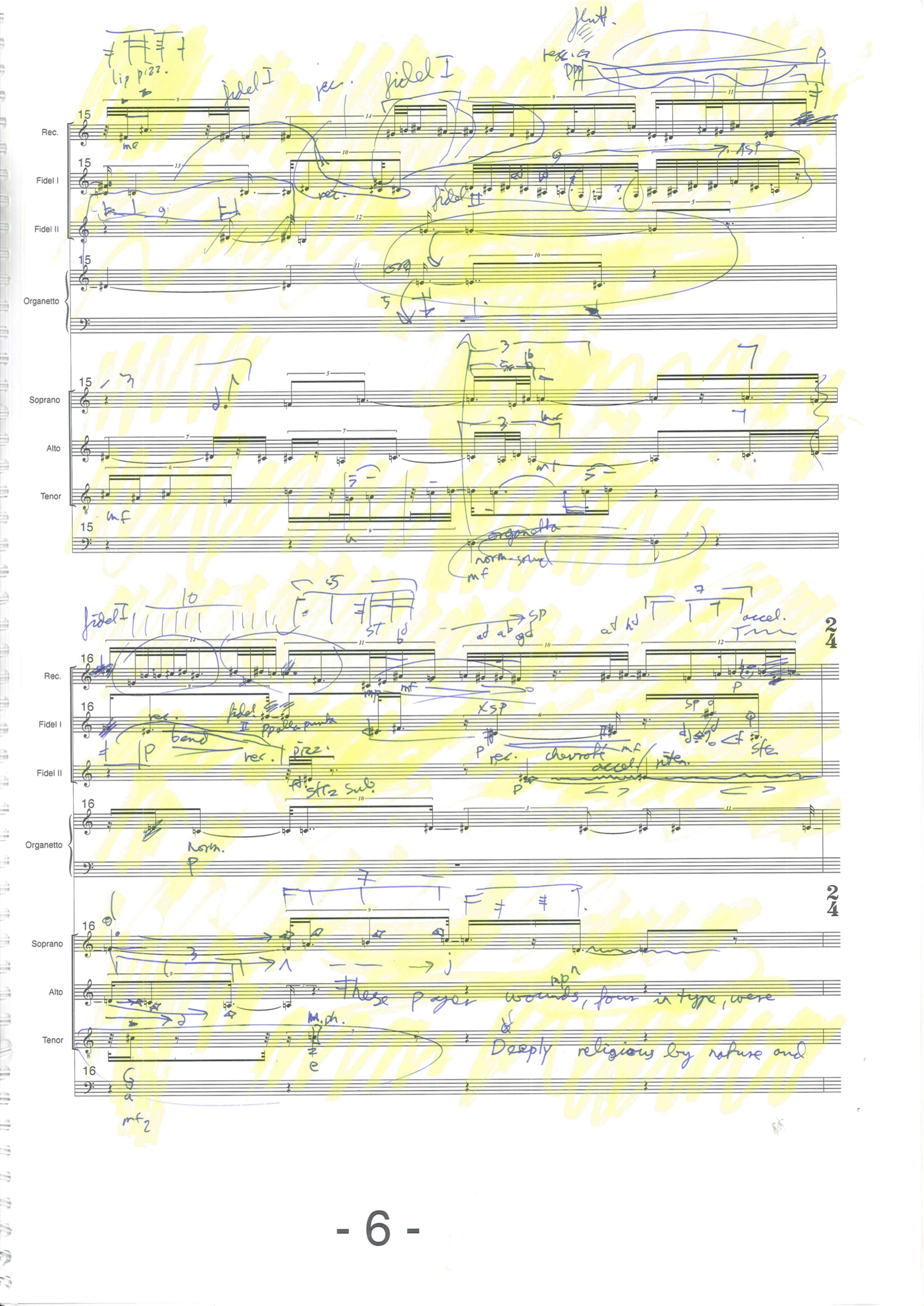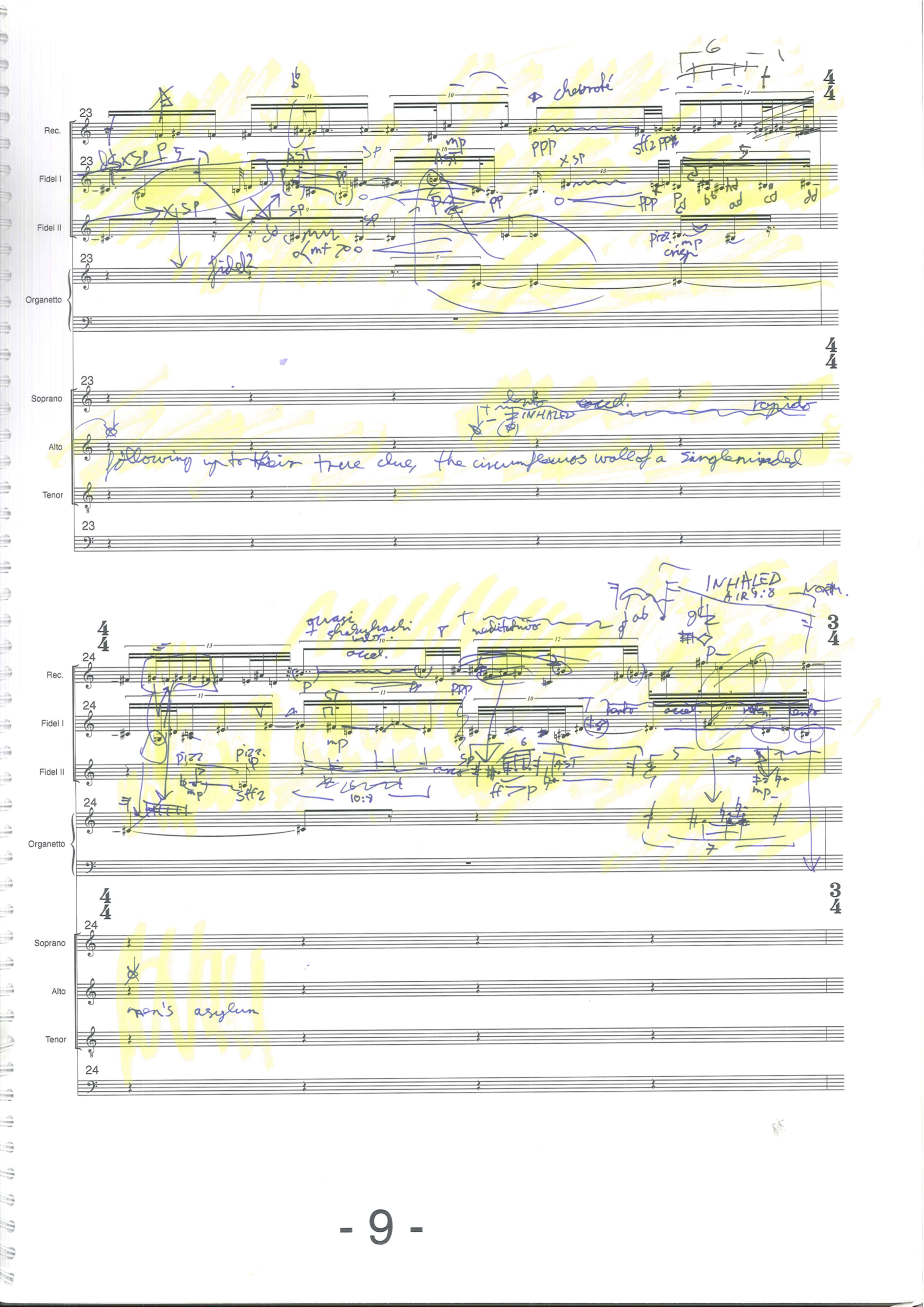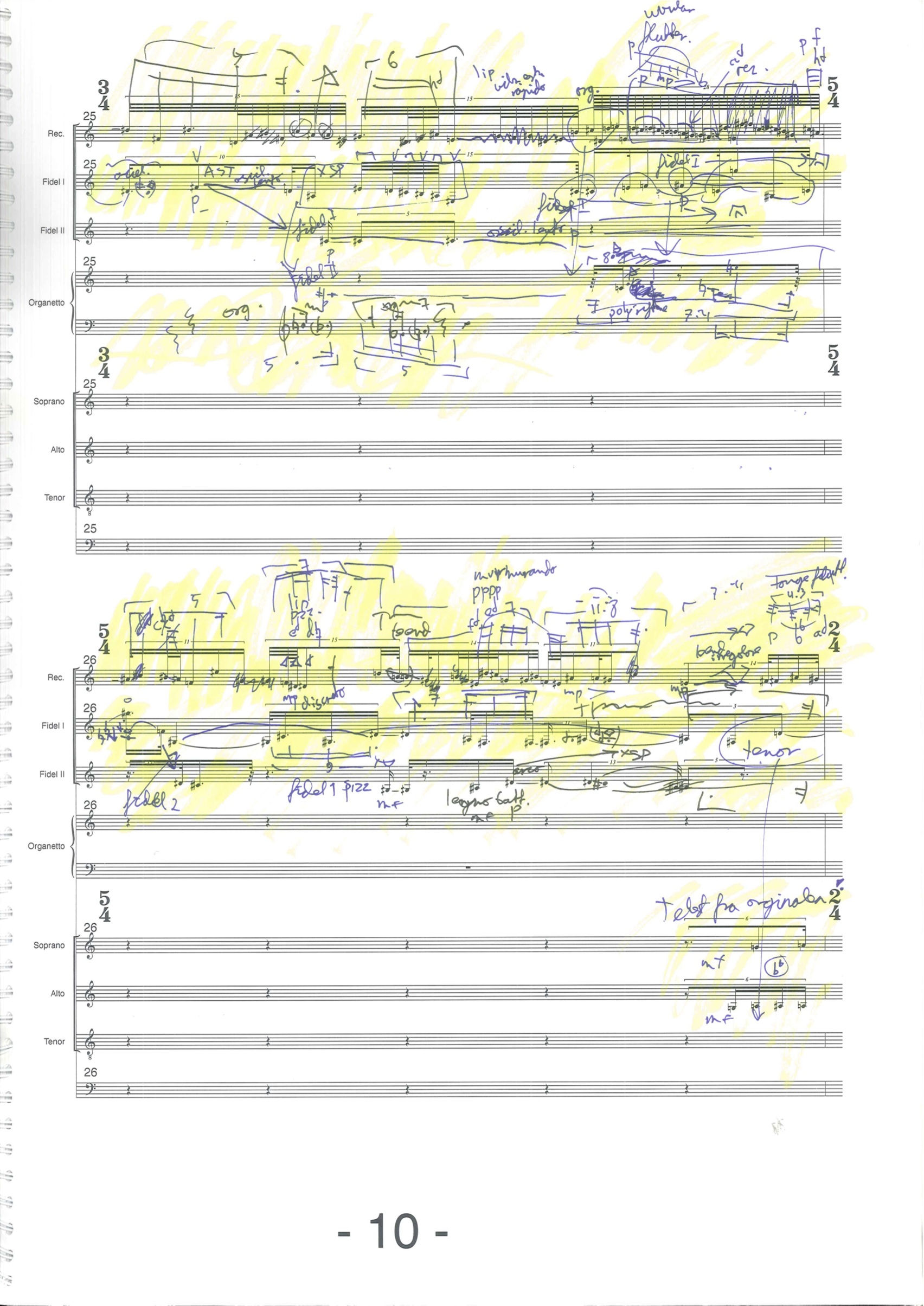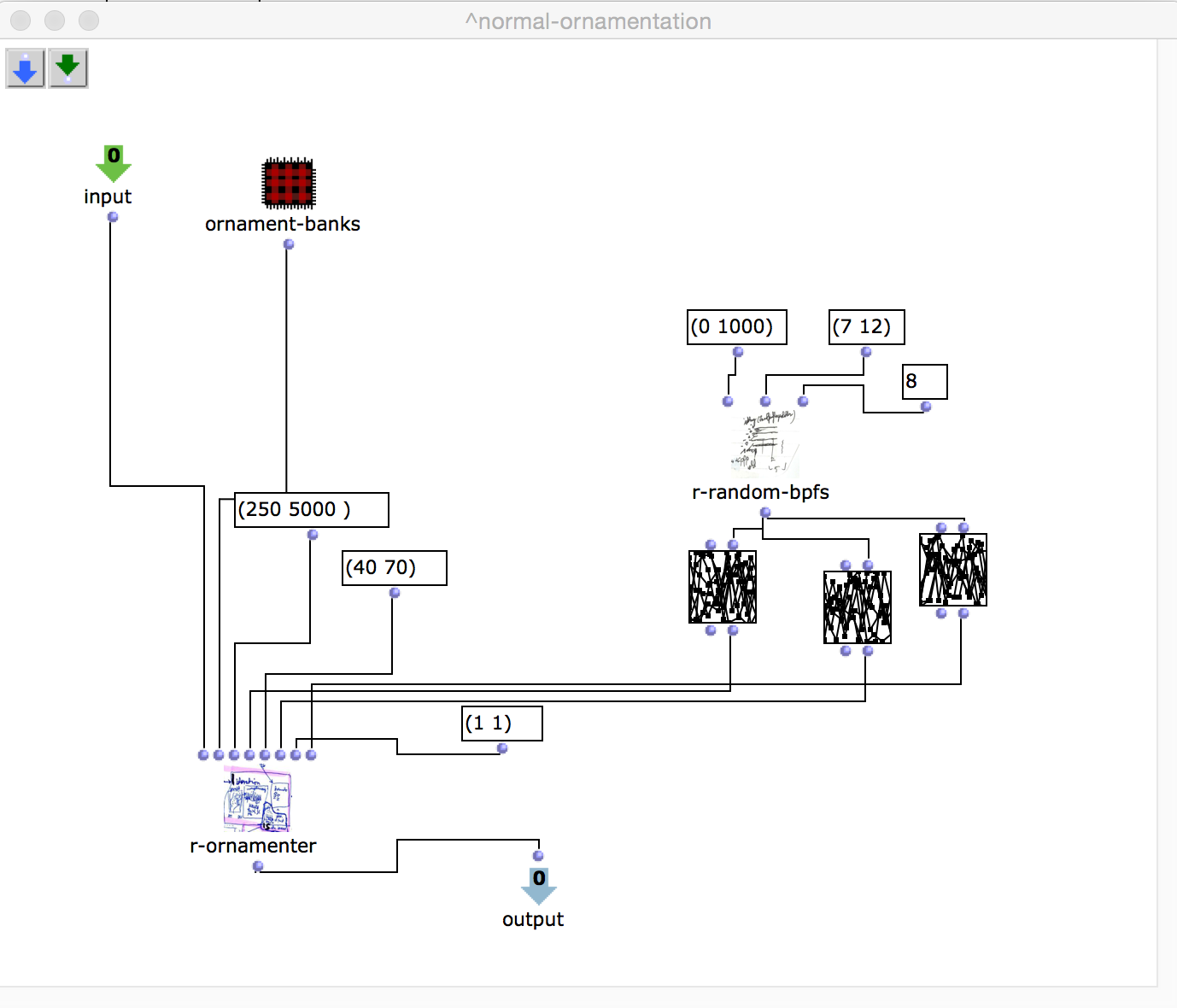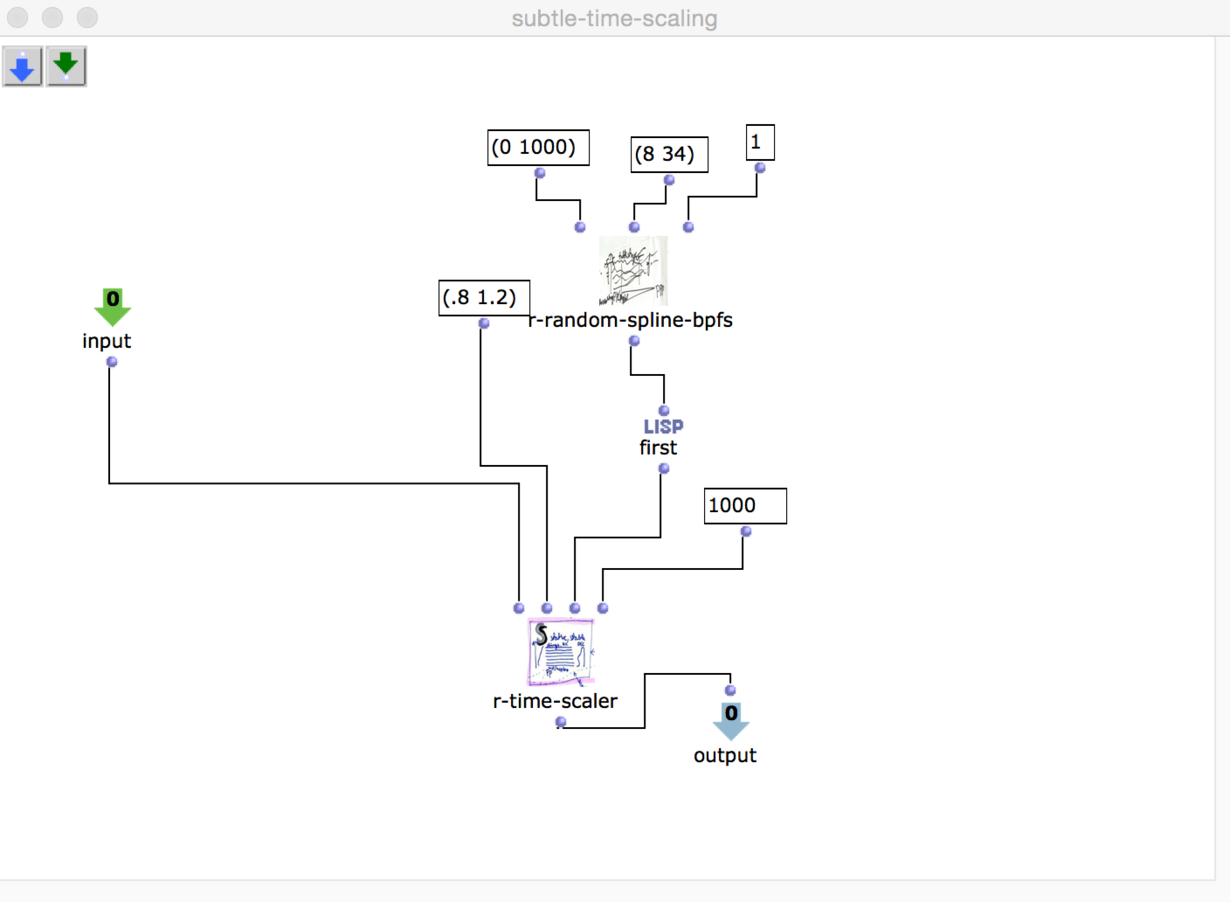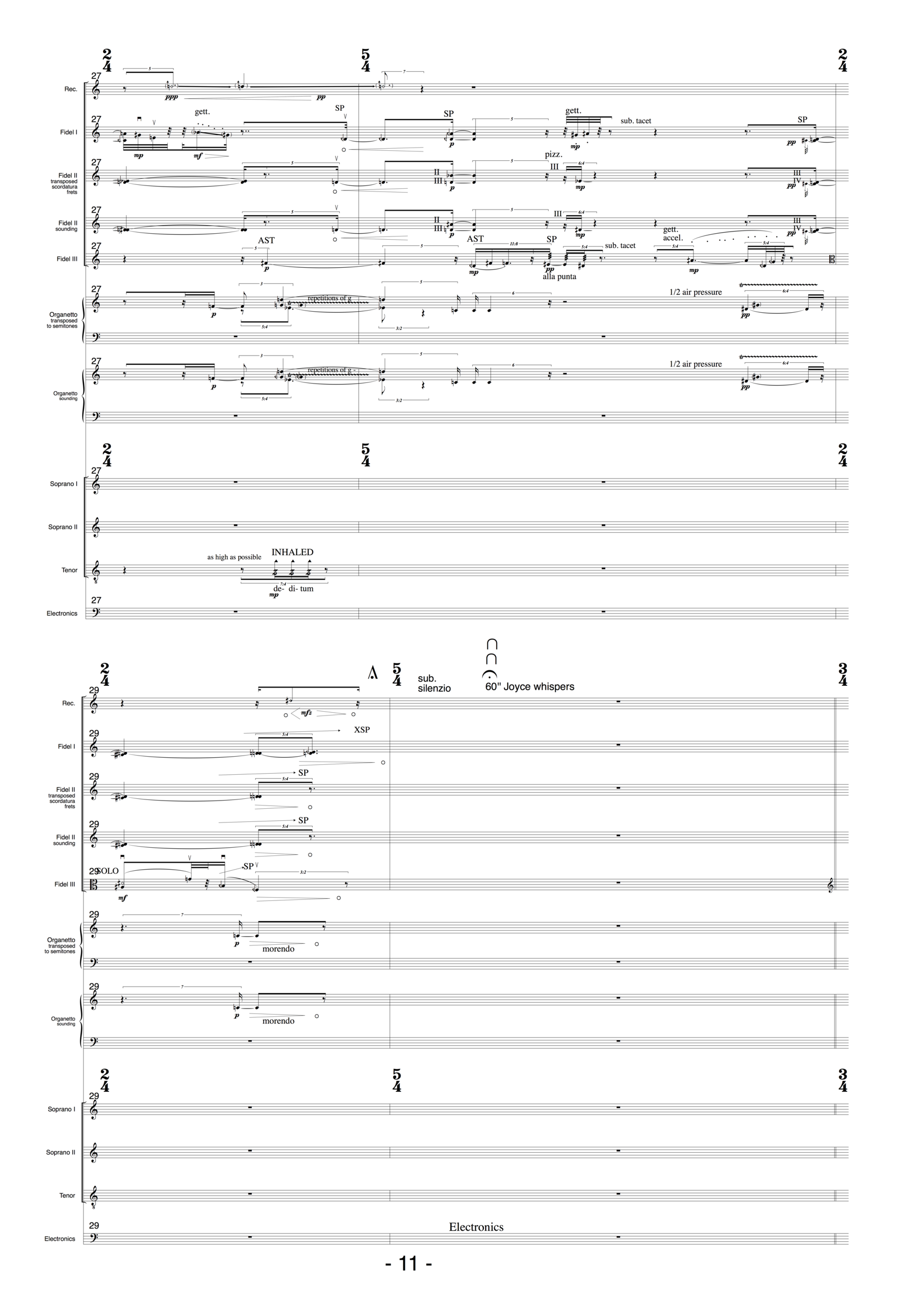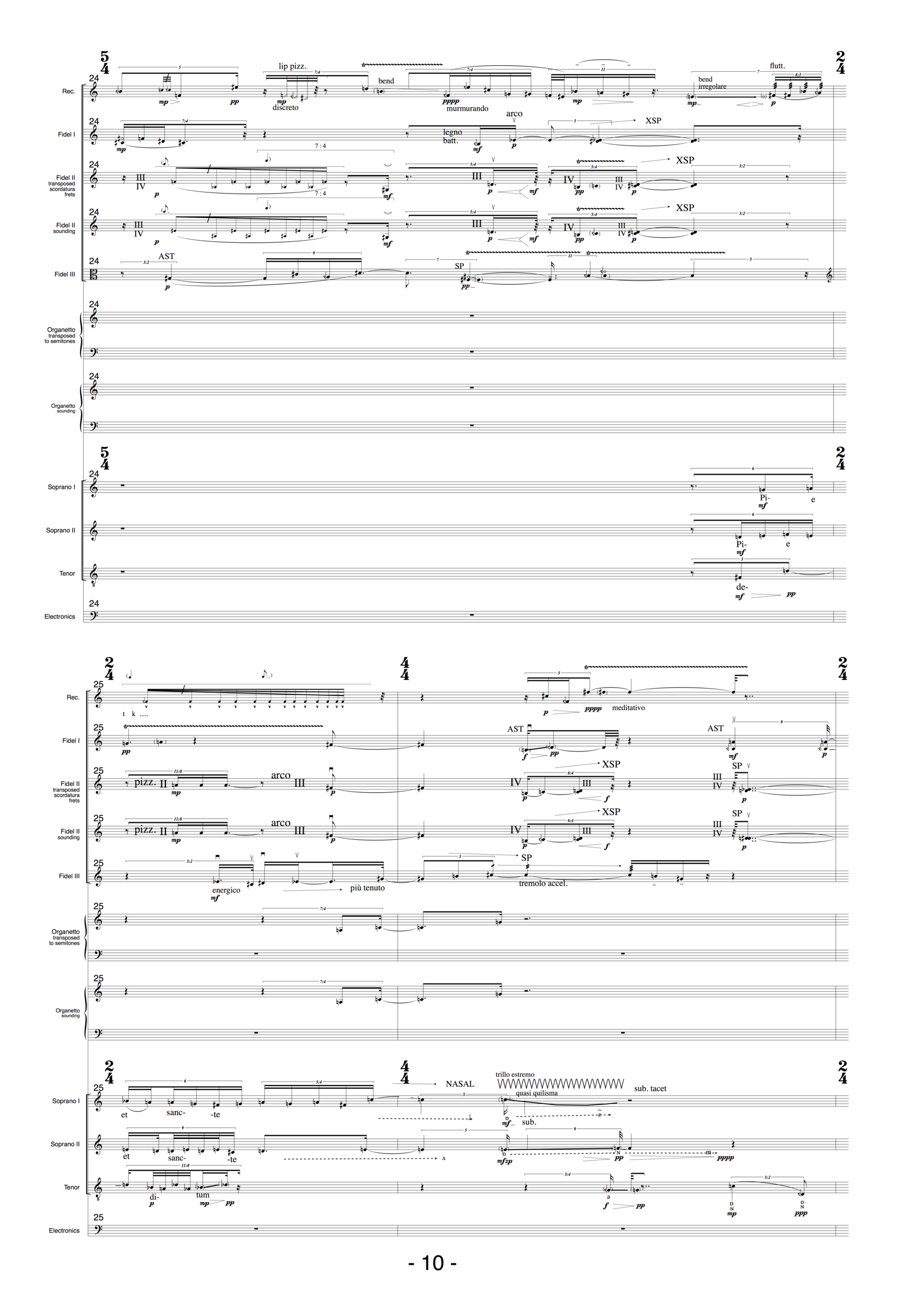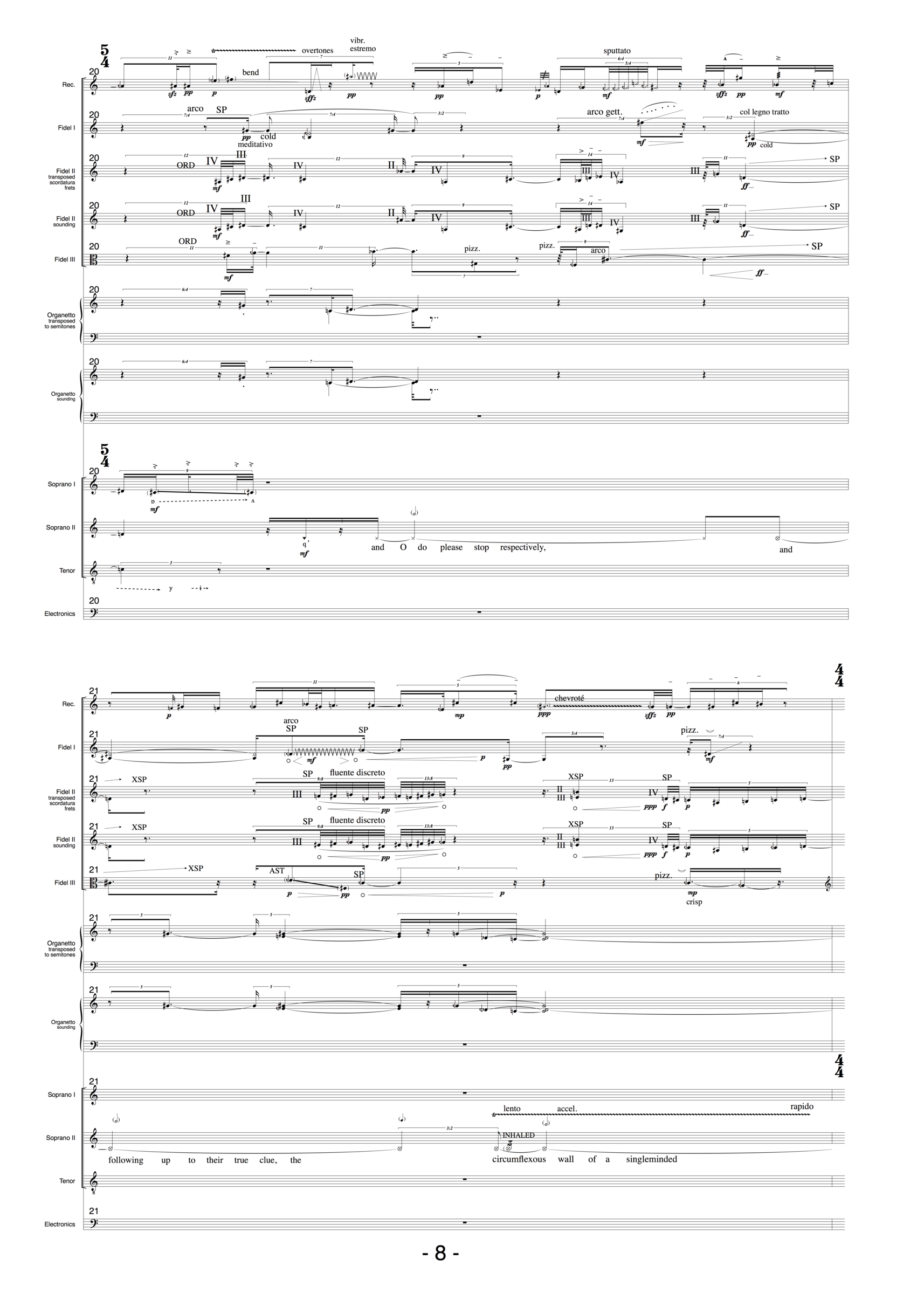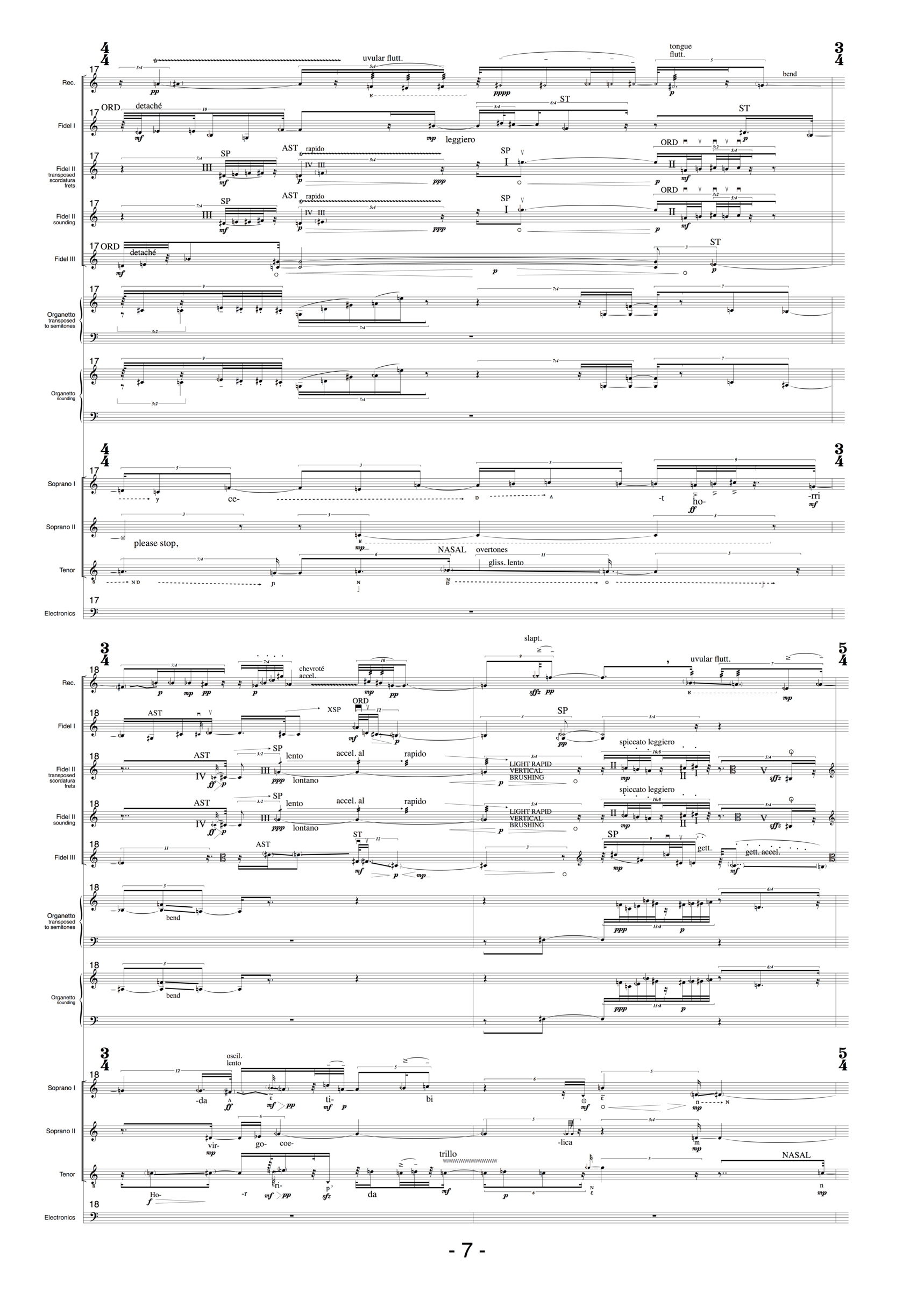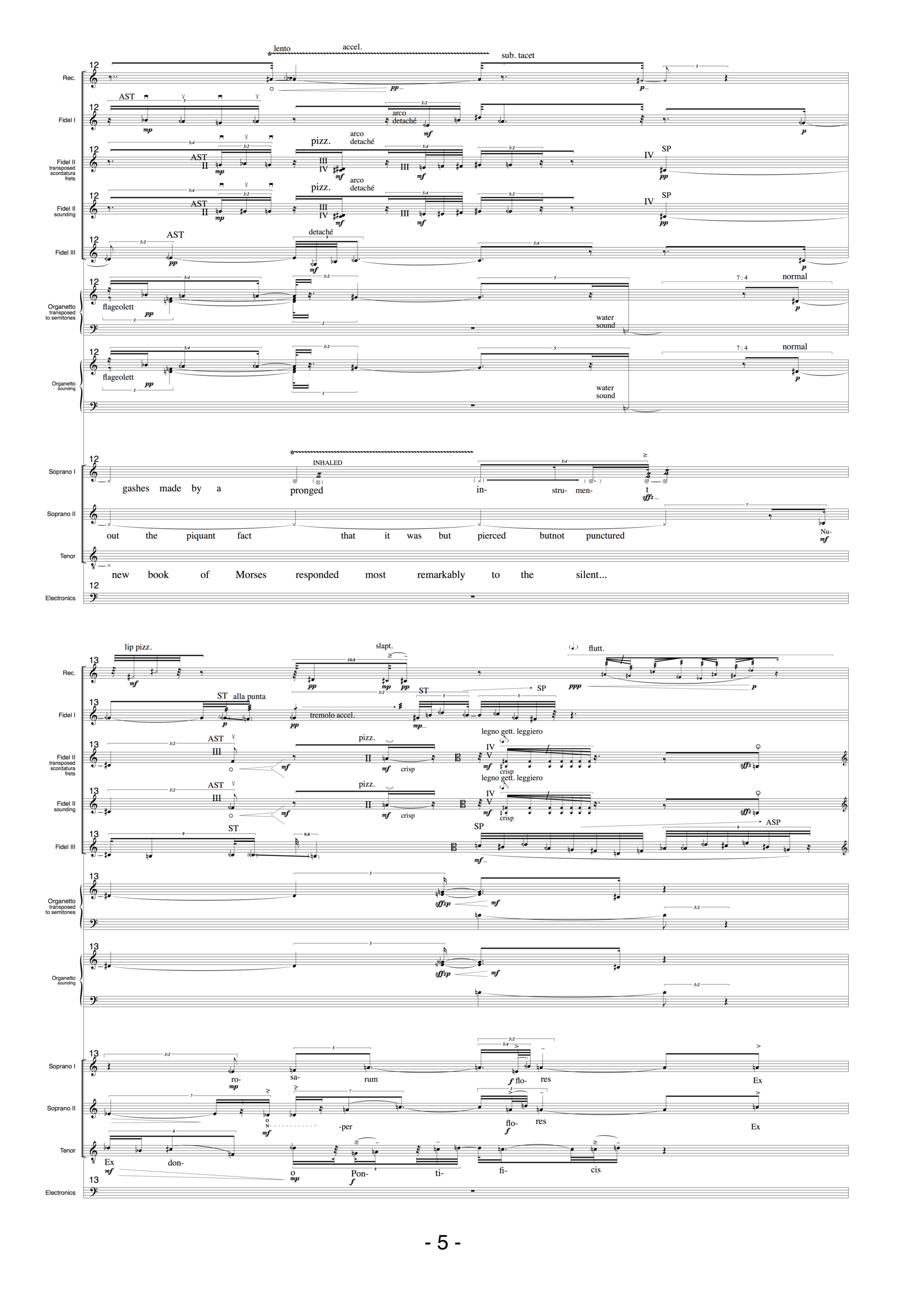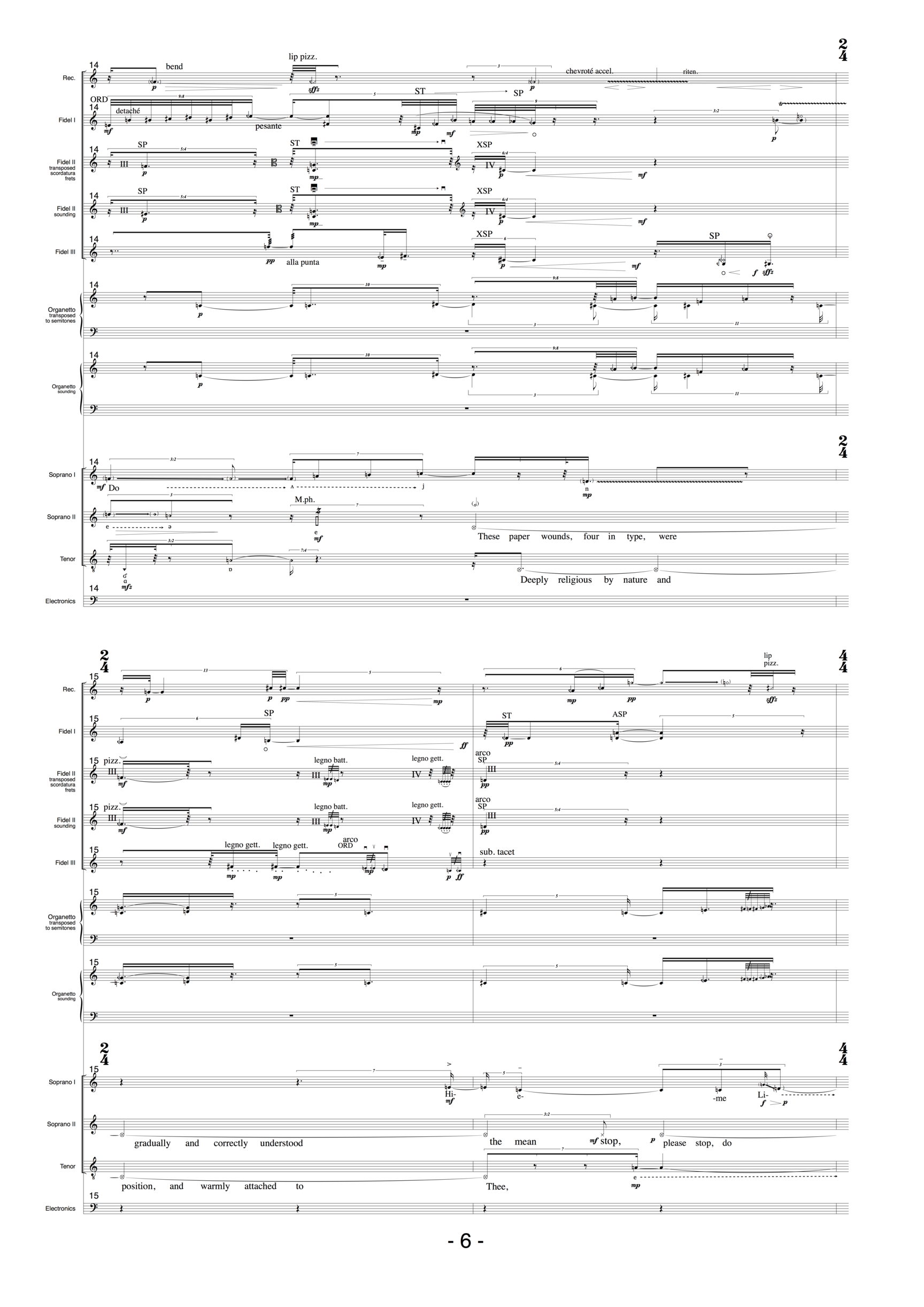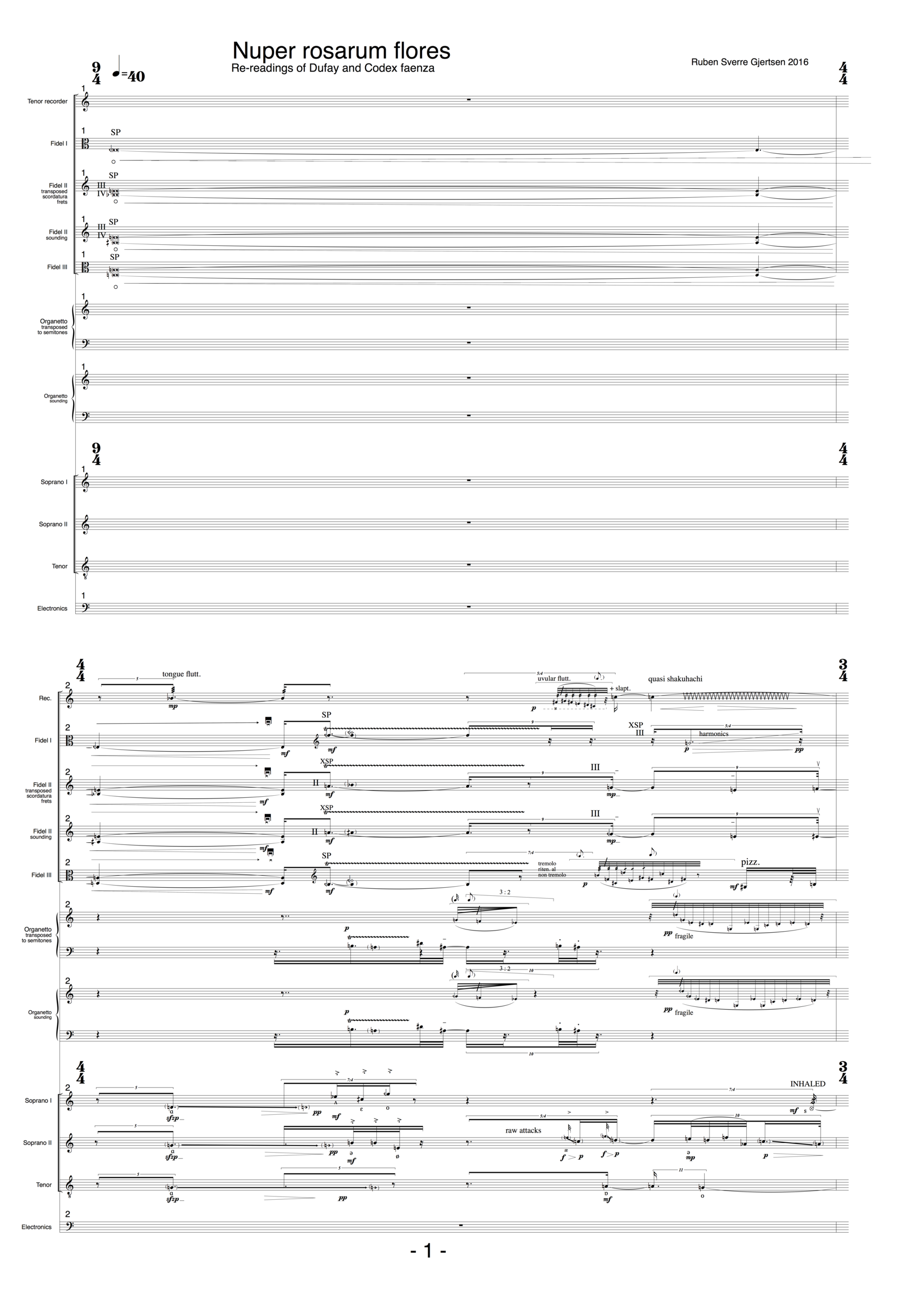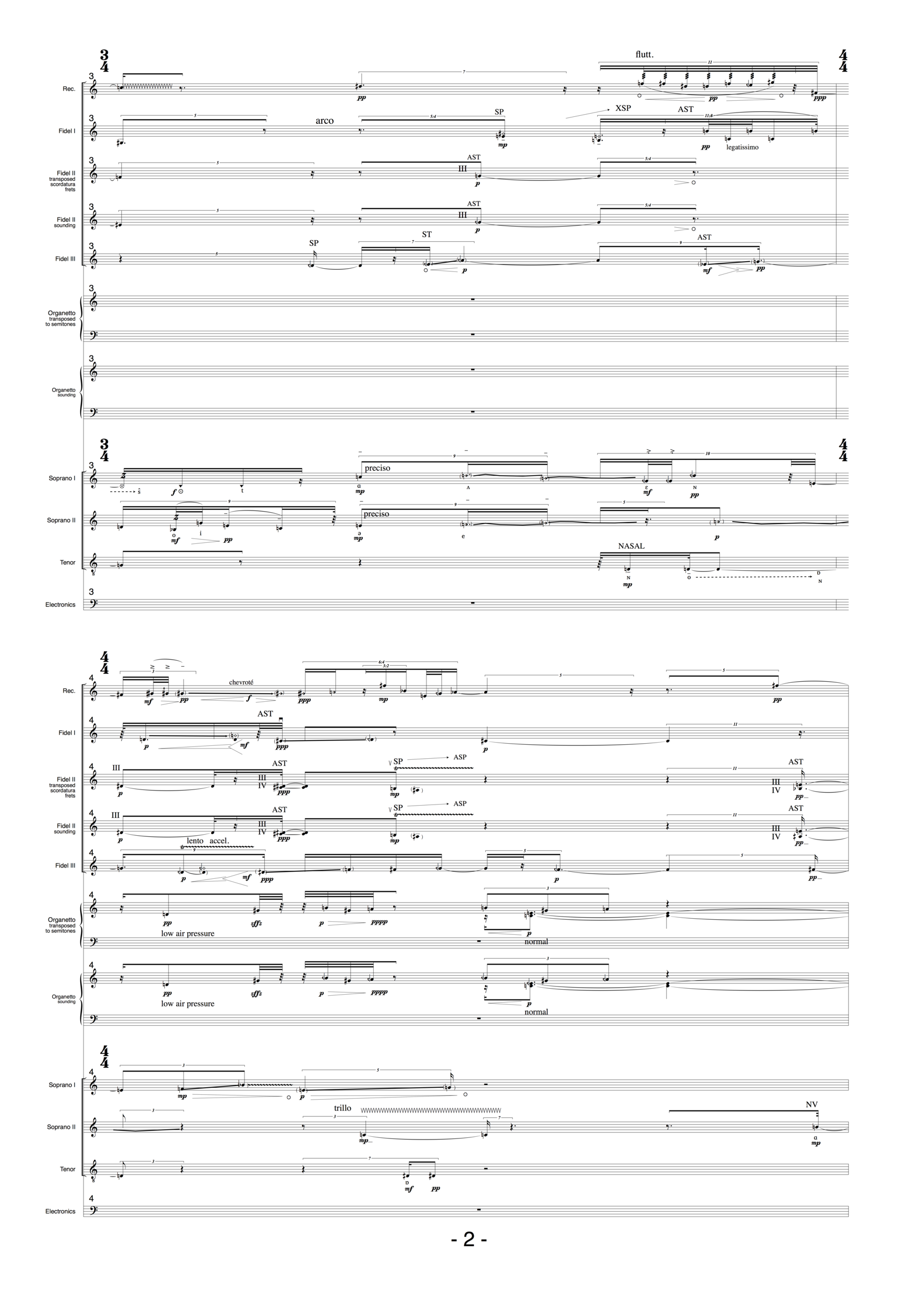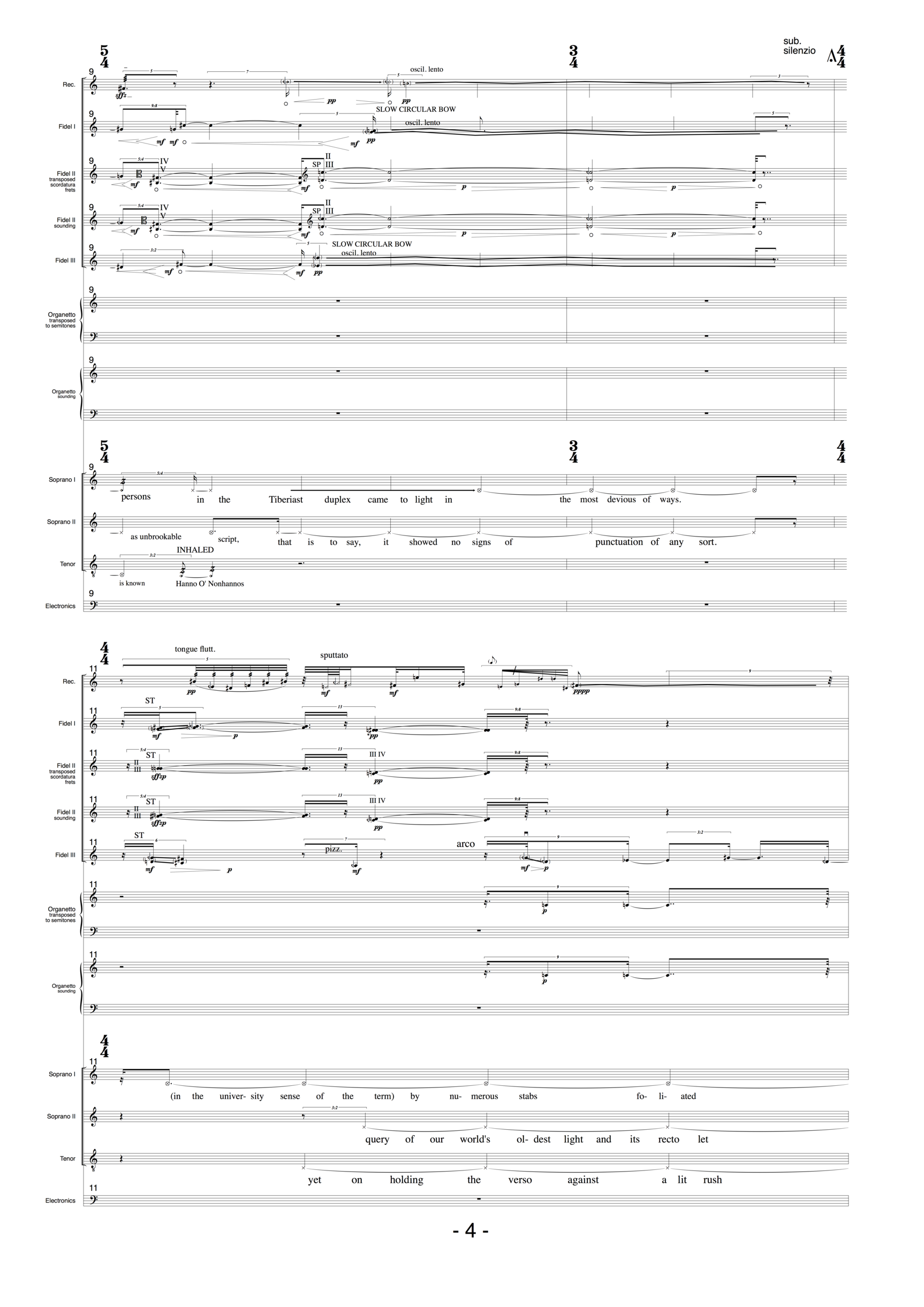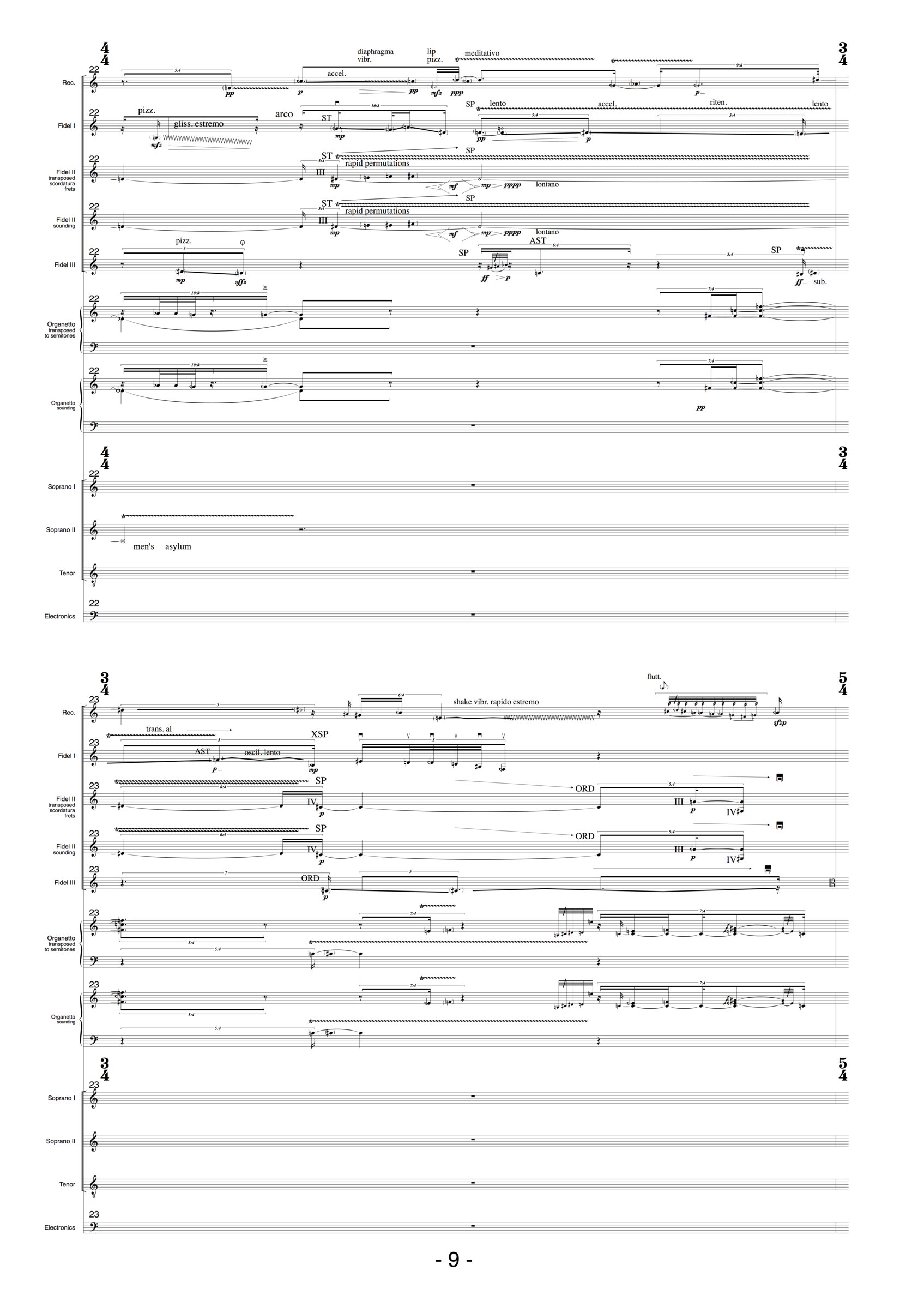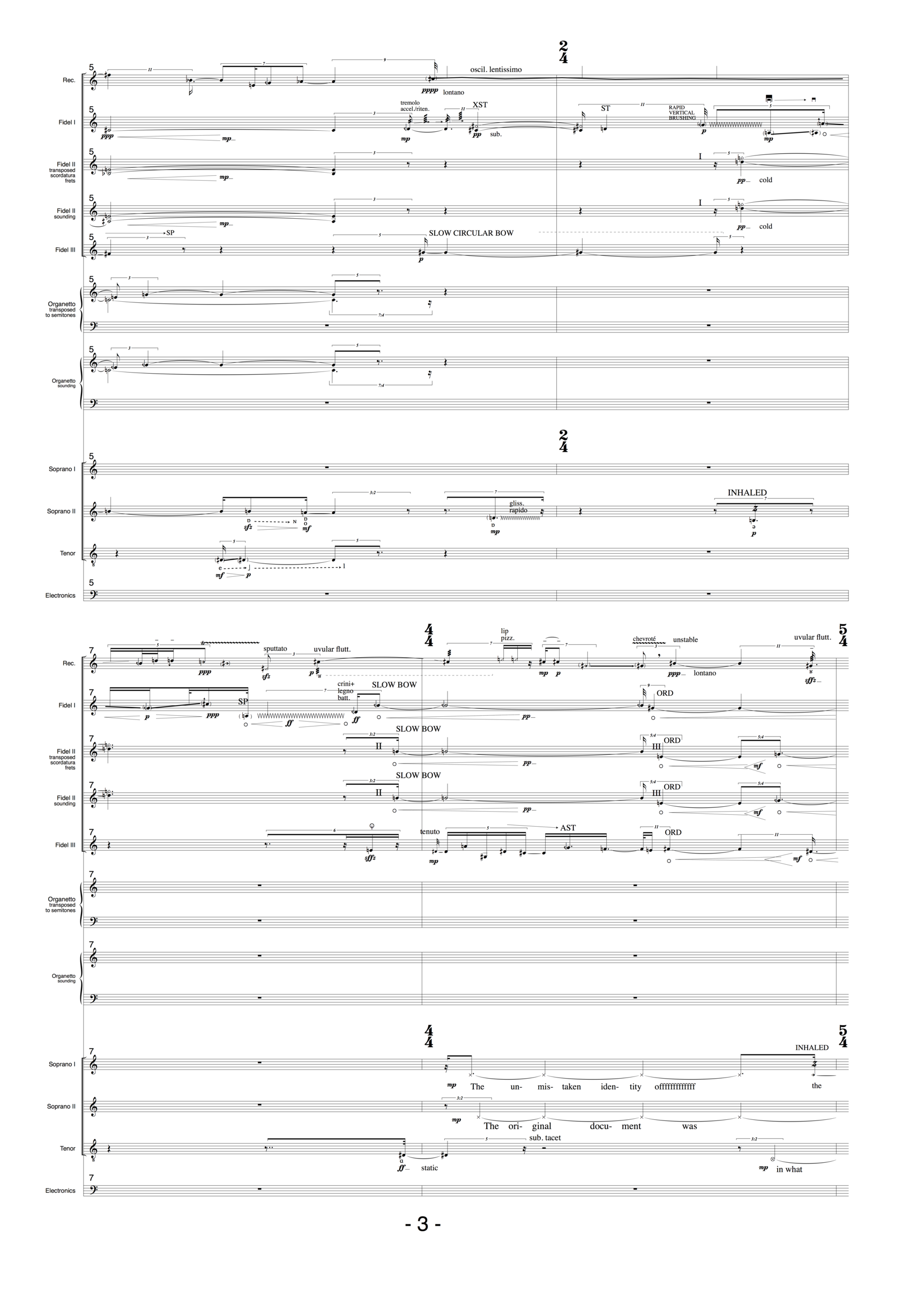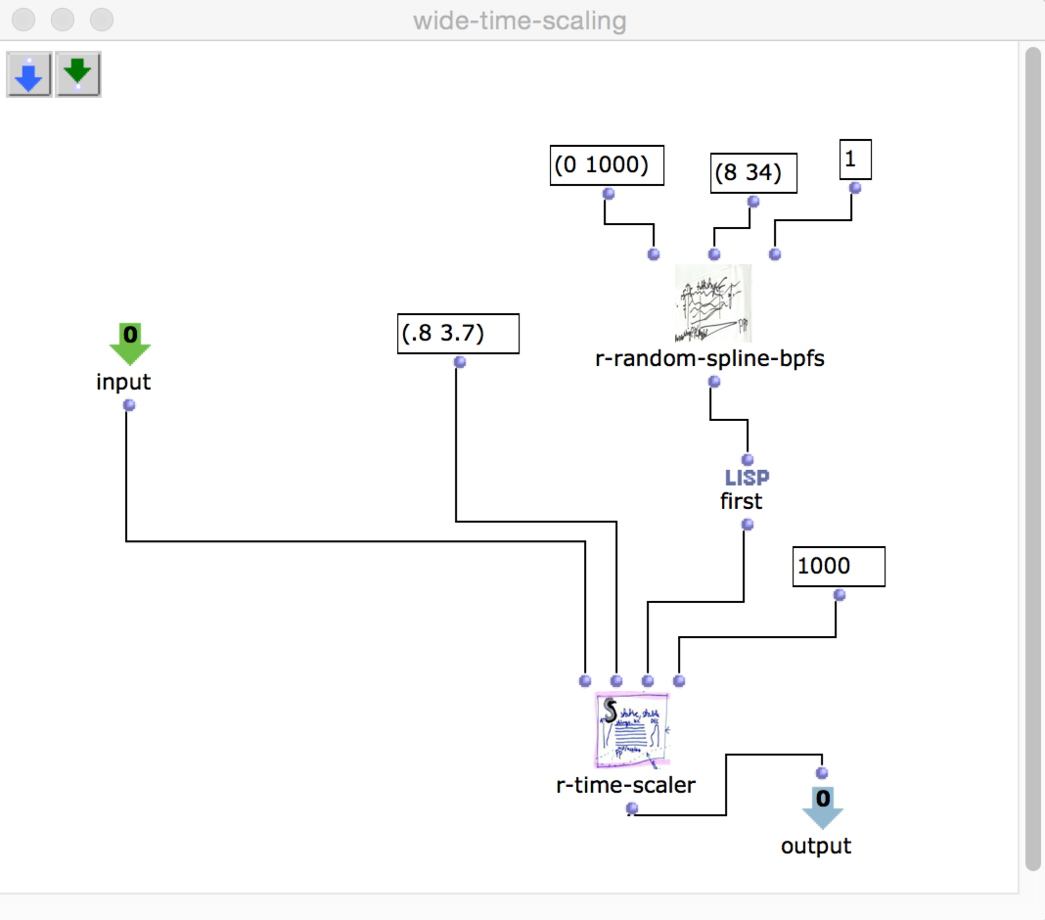Rehearsal of "Nuper rosarum flores" at WRAP, Bergen. From left to right: Hans Lub, Kjetil Almenning, Hans Knut Sveen, Ruben Sverre Gjertsen, Ingvill Holter, Mikko Perkola.
My new piece "Nuper Rosarum flores" was composed as a distortion of Guillaume Dufay's motet "Nuper Rosarum flores" from 1436. Dufay's original was written to celebrate the new dome in the cathedral Santa Maria del Fiore in Florence. Many have speculated and searched for numerical symbols in this composition, 1 counting number of notes in each phrase and part. My new piece is built on fragmentation, scaling, pitch distortion, as well as the stilistically "faulty" ornamentation machine, inserting figures based on the Codex Faenza manuscript. I read Dufay from a modern edition 2 and noted the choice of flats and sharps from the recording by Huelgas Ensemble. 3 You will find again half of the original latin text.
«Nuper rosarum flores
Ex dono pontificis
Hieme licet horrida
Tibi, virgo coelica,
Pie et sancte deditum
Grandis templum machinae
Condecorarunt perpetim.
Hodie vicarius
Jesu Christi et Petri
Successor Eugenius
Hoc idem amplissimum
Sacris templum manibus
Sanctisque liquoribus
Consecrare dignatus est.
(…)»
"Recently garlands of roses
given by the Pope
-despite a terrible winter—
adorned this temple of magnificent structure
forever dedicated in a pious and holy fashion
to you, heavenly Virgin.
Today the vicar
of Jesus Christ and successor
of Peter, Eugenius,
has deigned to consecrate this same
vast temple with his sacred hands
and holy liquors.
(...)" 4
The singers need to relate to three types of language; latin, phonetic symbols and the expanded english language used by James Joyce in "Finnegans wake". Words of english, irish, along with many other languages are often twisted into humorous hybrid words.
«The unmistaken identity of the persons in the Tiberiast duplex came to light in the most devious of ways. The original document was in what is known as Hanno O’Nonhanno’s unbrookable script, that is to say, it showed no signs of punctuation of any sort. Yet on holding the verso against a lit rush this new book of Morses responded most remarkably to the silent query of our world’s oldest light and its recto let out the piquant fact that it was pierced butnot punctured (in the university sense of the term) by numerous stabs and foliated gashes made by a pronged instrument. These paper wounds, four in type, were gradually and correctly understood to mean stop, please stop, do please stop, and O do please stop respectively, and following up their one true clue, the circumflexuous wall of a singleminded men's asylum....» 5
«- Your temple, sus in cribro! Semperexcommunicambiambisumers. Tugurios-in-Newrobe or Tukurias-in-Ashies. Novarome, my creature, blievend bleives. My building space in lyonine city is always to let to lionlike Men, the Mookse in a most consistorous allocution pompificially with immediate jurisdiction constantinently concludded (what a crammer for the shapewrucked Gripes!). And I regret to proclaim that it is out of my temporal to help you from being killes by inches, (what a thrust!), as we first met each other newwhere so airly. (Poor little sowsieved supsquashed Gripes! I began to feel contemption for him!). My side thanks decretals, is as safe as motherour’s houses, he continued, and I can seen from my holeydome what it is to be wholly sane. Unionjok and be joined to yok! Parysis, tu sais, crucycrooks, belongs to him who parises himself. And there I must leave you subject for the pressing. I can prove that against you, weight a momentum, mein goot enemy! or Cospol’s not our star. I bet you this dozen odd. (…) Quas primas - but ’tis bitter to compote my knowledge’s fructos of. » 6
Ambigous language has interested me far more than than clear narratives intented for musical use. I have kept coming back to "Finnegans wake" for years, finding texts to be spoken or whispered by singers and instrumentalists. Like with dense polyphonies of early music, the giant polyphonies of Thomas Tallis and Alessandro Striggio, we could afford to lose details for the experience of mass phenomena. What in my view kills much modern opera repertoire is an overly didactic and predictable use of text, with composers fulfilling frequent demands to communicate and convey "strong" messages. I have tried to go in an opposite direction, using the text as sound, dwelling by phonetic qualities, stretching certain parts of a word longer than normally.
A medieval polyphony is faded out while throat singing, noise and whisperings are faded in.
Both text and music need their own space, they do not need to be in sync and emphasize each other. A similar attitude came out in our recordings of the mass text, a sensual experience of being absorbed in a floating mass of words and obscured utterings.
"What is the relation between the work of art and communication? There isn't one. The work of art is not an instrument of communication. The work of art has nothing to do with communication. The work of art does not contain the least bit of information. On the other hand, there is a fundamental affinity between the work of art and the act of resistance. It has something to do with information and communication as an act of resistance. What is this mysterious relation between the work of art and the act of resistance, when the people who resist neither have the time nor sometimes the culture necessary to have the slightest connection with art? I do not know. [André] Malraux developed an admirable philosophical concept. Malraux said something very simple about art, he said "it is the only thing that resists death." " 7
While composing, I may have found it useful to imagine a flow of musical information which can be treated and manipulated certain ways, while it does not have anything to do with conveying clear and instructive messages, this 'information' is of a more ambiguous and fragile nature.
"Nuper rosarum flores" became the most precisely notated work in our concert. We have already seen "Nuper rosarum flores" going through the ornamentation machine. This was one of the initial procedures for the materials. Further processes disrupted the continuity of time and pitch space. The OM-Ruben library contains transformation tools which can be connected in any order through patch chords. Three main types of Dufay-distortions were created.
- Short fragments with subtle time scaling (tempo flux), and an ornamentation style not to distant from the Codex Faenza sources. This was mainly used for the vocal parts, which have some of the most direct Dufay quotations.
- Long fragments, pitchshifted to a new range (microtones), variable tempo scaling, time pointer and more alienated microtonal ornamentation (microtonal alterations of Codex Faenza figures).
- The last type is similar to the second, but ornamentation is done before the time pointer. The Codex Faenza figures become themselves fragmented, they are not mainly smoothing elements in a fragmented texture. Finally, the result goes through a filter of forbidden triads, mainly figures with leading notes and chords with strong tonal tensions.
For technical details, I will recommend downloading the OM-Ruben library, insert a function in a patch, and type 'd'.
The results of these Dufay distortions were dense, often not practical to perform, and required a stage of creative reinterpretations. Contrary to the experience of starting with a blank paper, I started with papers that were too full. We will look at some pages side by side. From left to right we have:
- Impossible pages with montages of raw Dufay distortions. A computer can create a lot of mess.
- Interpretations, attempts to make musical sense of these materials. The distortions were often unplayable and had less focus in harmony and interval colours than I prefer. Pitches were changed, notes were redistributed between musicians, and missing dimensions of timbre, vibrato type, playing techniques and dynamics were added. These are not results of special compositional techniques, rather palettes of gestures and sounds and shapings of the musical surface. Yellow means "done" and edited in the notation software.
- The most recent version of the finished piece, reached by several rounds of revision, playing through the results on my microtonal instrument, singing through the vocal parts, and finally doing practical adjustments in collaboration with the musicians.
From left to right: Ruben Sverre Gjertsen, Ingvill Holter, Mikko Perkola, Jostein Gundersen, Alwynne Pritchard, Hans Lub.
Compositional techniques are tools, like musical instruments, to suggest possibilities, to be shaped and interpreted by a musician. They are never goals by themselves, even though the debate may often show prejudices and failings to see the whole picture. The artist is going through processes of overall visions, time consuming development of tools, experimentation, and a final zoom out to put together and evaluate possible results. Erling Guldbrandsen's studies of sketches by Boulez reveals the freedom in his composing with serial techniques. 8 This adds further nuances to common misconceptions about what his music is.
"I mean it's technology, and all this stupidity about technology being an enemy is absurd. It isn't at all; it's a tool. Technology is one tool after the other, and it's no better or worse than other tools." 9
As a composer, I have often developed visual maps of a composition, the music consists of sculptures. It is possible to zoom in and look for compositional techniques, intuitive and improvised solutions, to then again try to abstract and create techniques from what I did intuitively. There is a continuos interaction between the whole and the detail, between freedom and techniques. There are orchestral sketches to be composed out. I noted the continuum between sterile surfaces, blocks of concrete, modernistic artitecture, and on the other hand full biological diversity, ornaments, a world of particles. The useful approach would not at all be a binary one, but finding paths through this terrain, cycles of crystallization and decay. Plants invade abandoned citites and clear shapes are eroded and turned into particles by natural processes. These are all metaphors with potential connections to musical ecosystems.
The organetto has rich expressive possibilities. The performer can control the air stream; little air for shimmering sounds, bellow shake for a tremolo effect. Abrupt accents and dynamic shapes are possible. After the first rehearsals, I revised the organetto part with these possibilities in mind.
Hans Knut Sveen created paper extensions for all the organ pipes to tune any note a quartertone down. Air pressure will also affect intonation. I selected a fixed quartertone scale for the organetto and a pattern of quartertone frets for Anna Danilevskaia's fidel for the final revision of "Nuper rosarum flores".
The less distorted fragments were given to the singers, assuming they would perform less rapid ornamentations. This does not always need to be the case. During one of the "Wheels within wheels" workshops someone speculated whether Codex Faenza was only intended as instrumental music. Were there no highly virtuosic singers in the late medieval era?
Transformations brought Dufay's modal colours into a microtonal language closer to what I have been exploring in my own past works. The new "Nuper rosarum flores" 10 is jumping around within an Ars Nova score.
